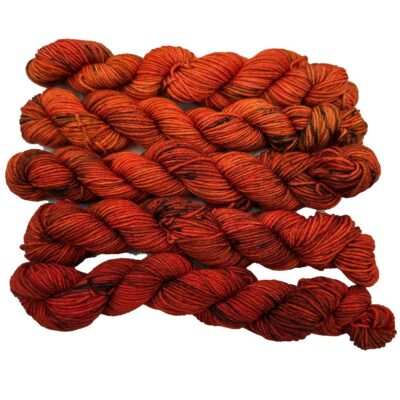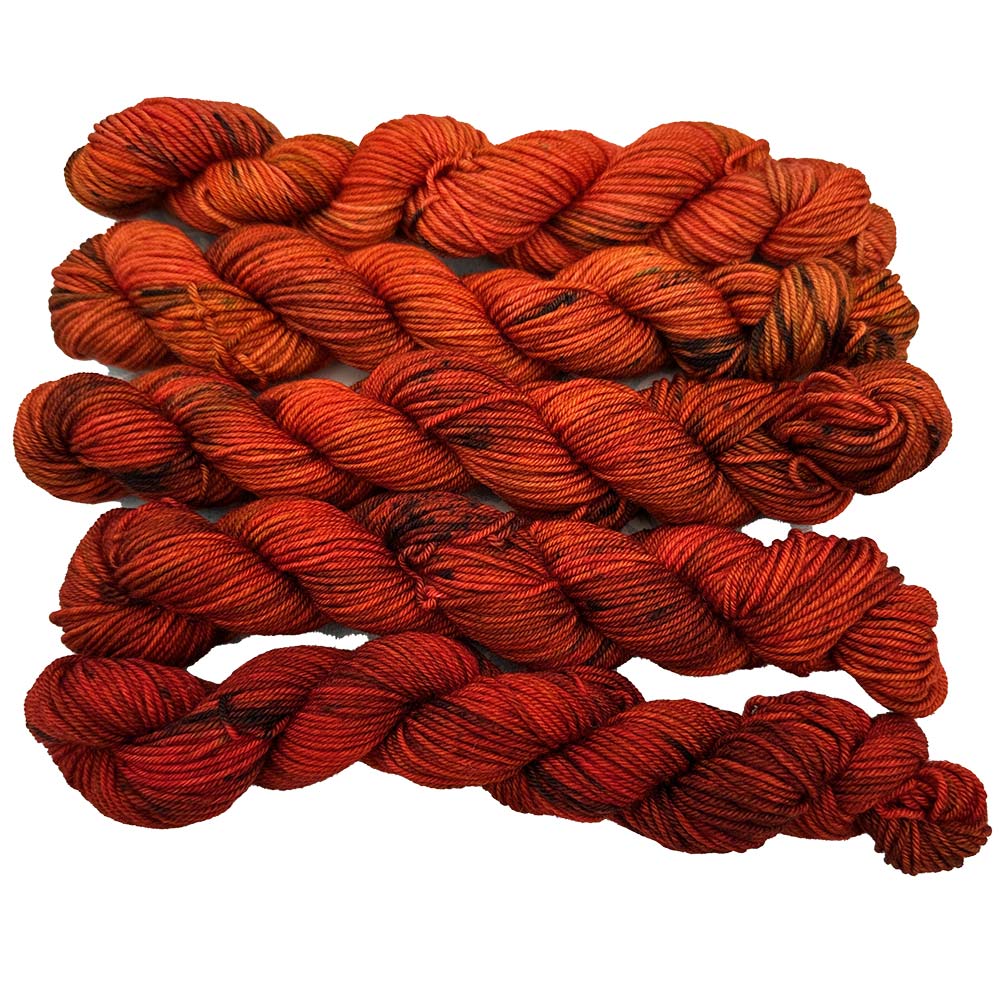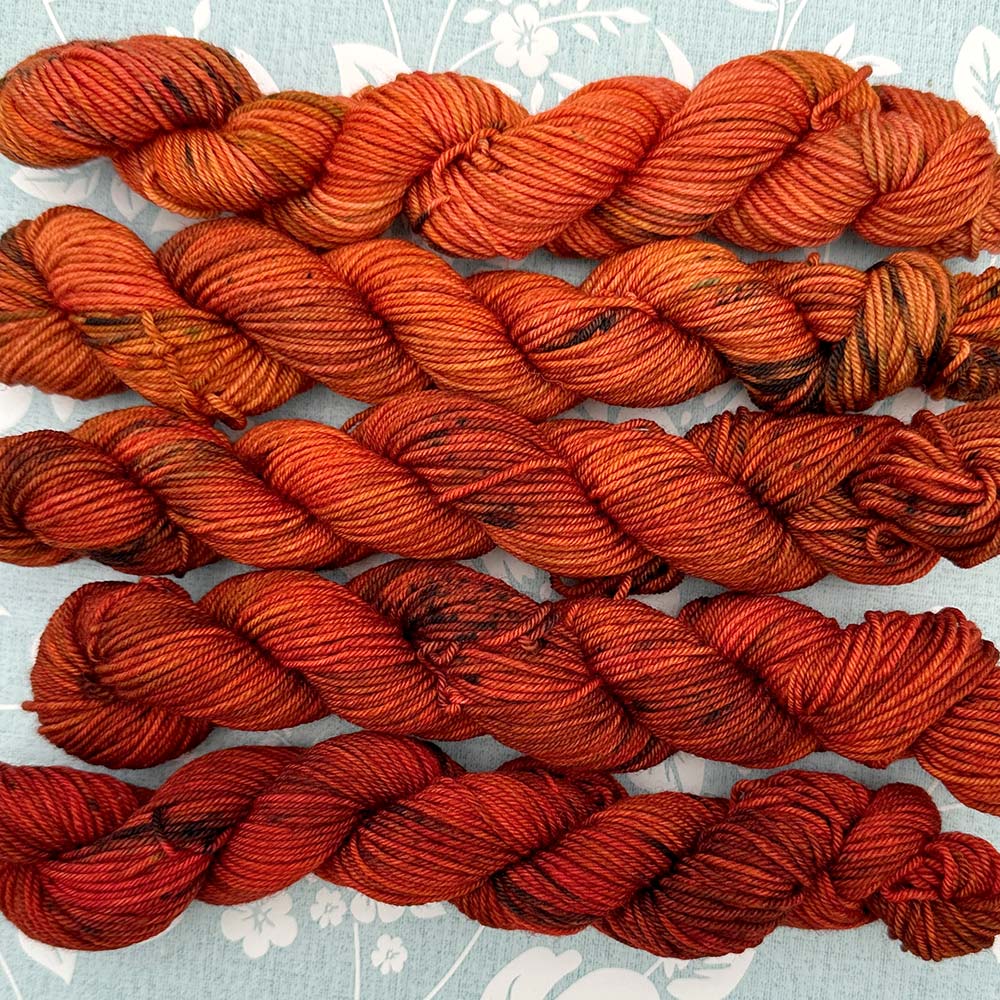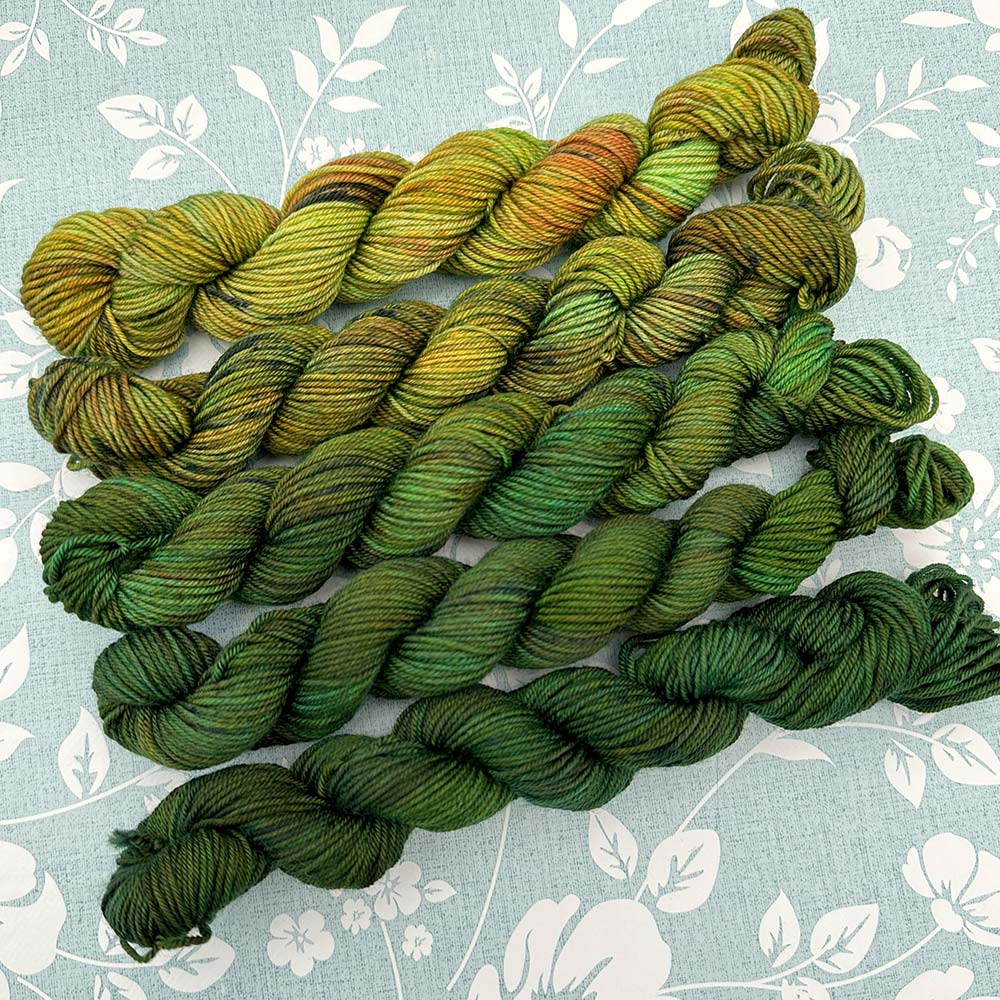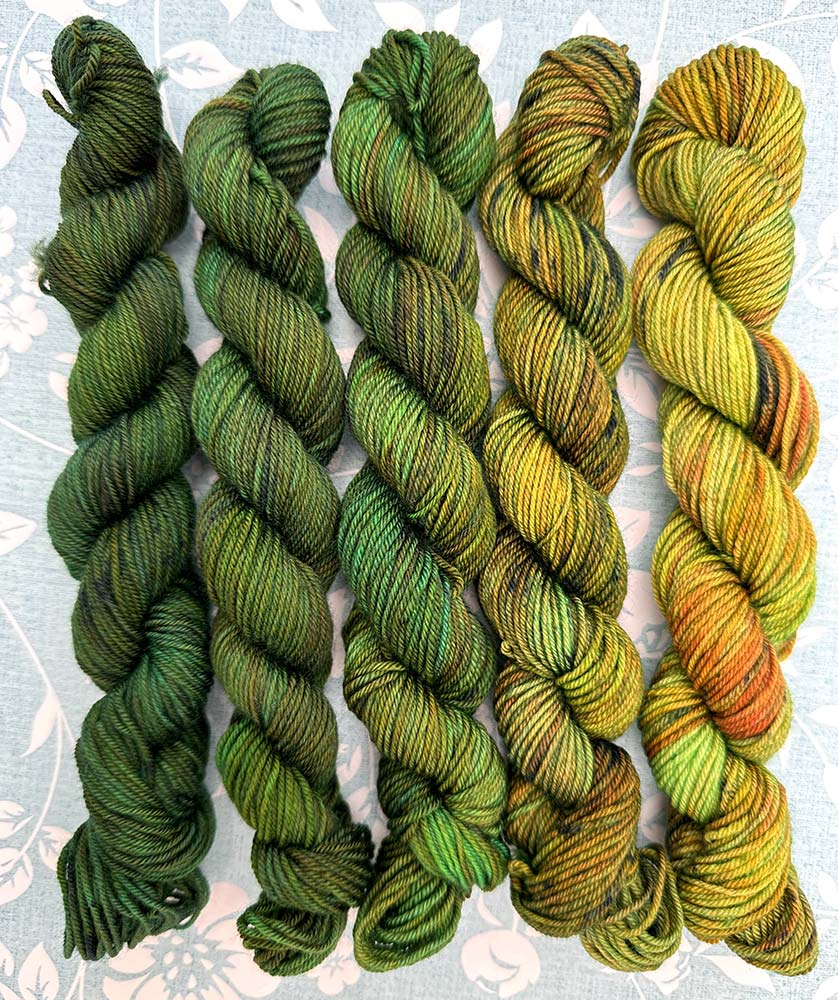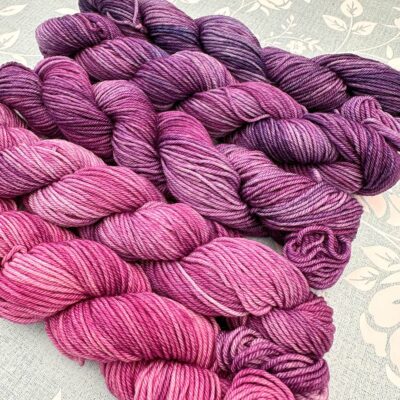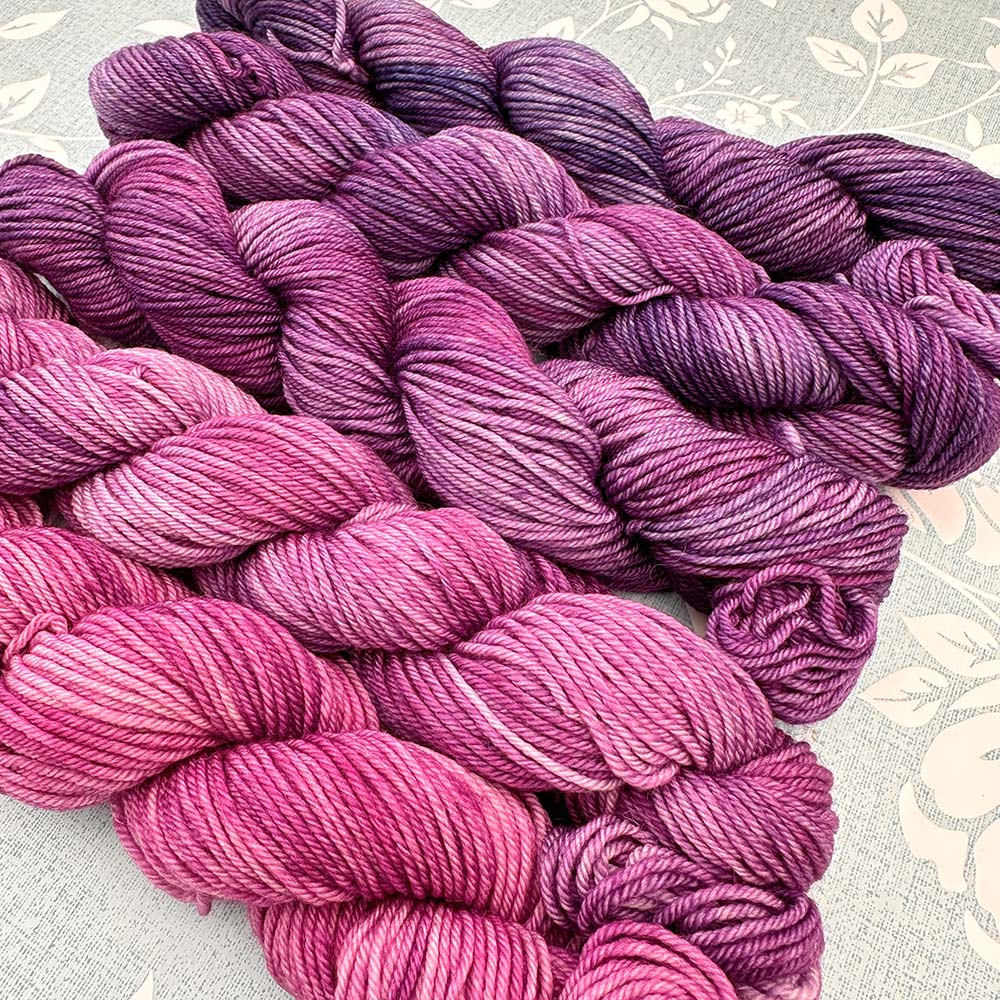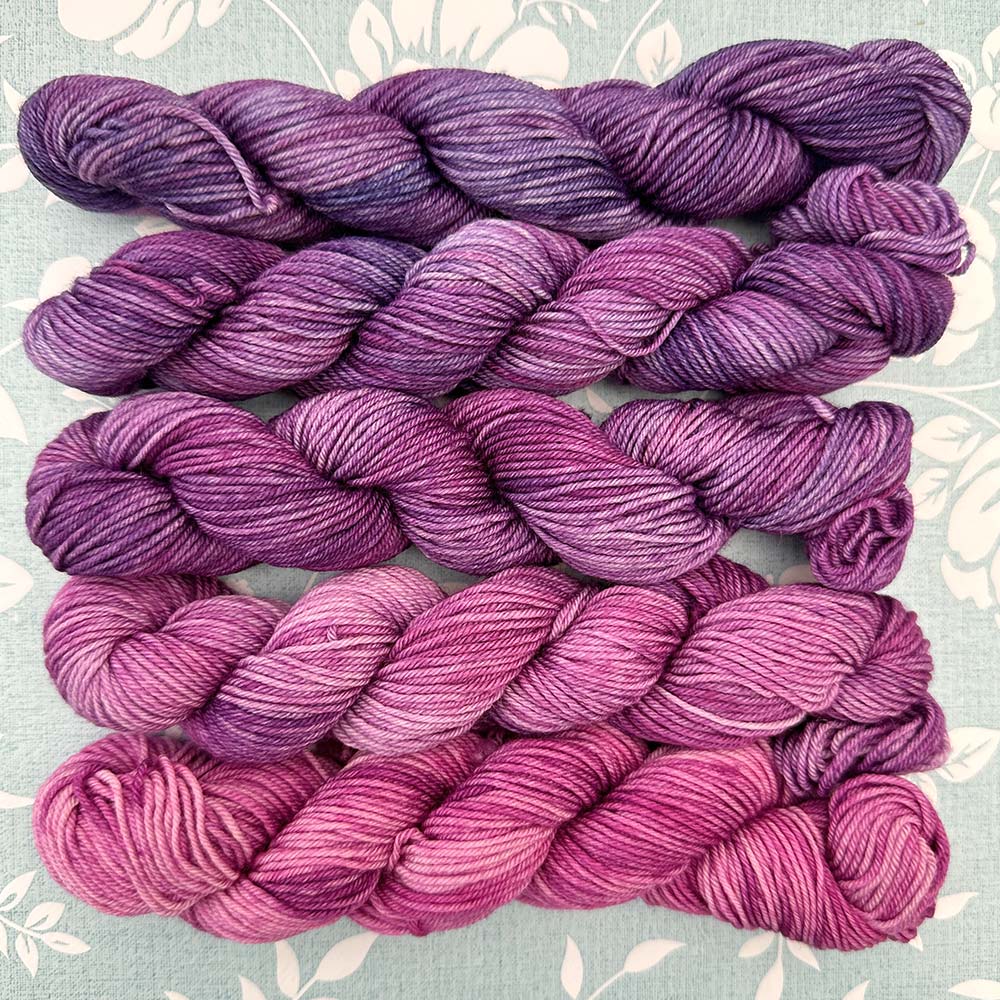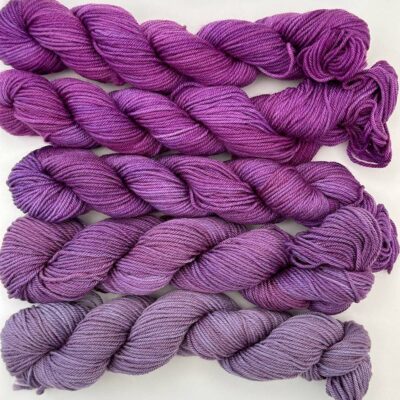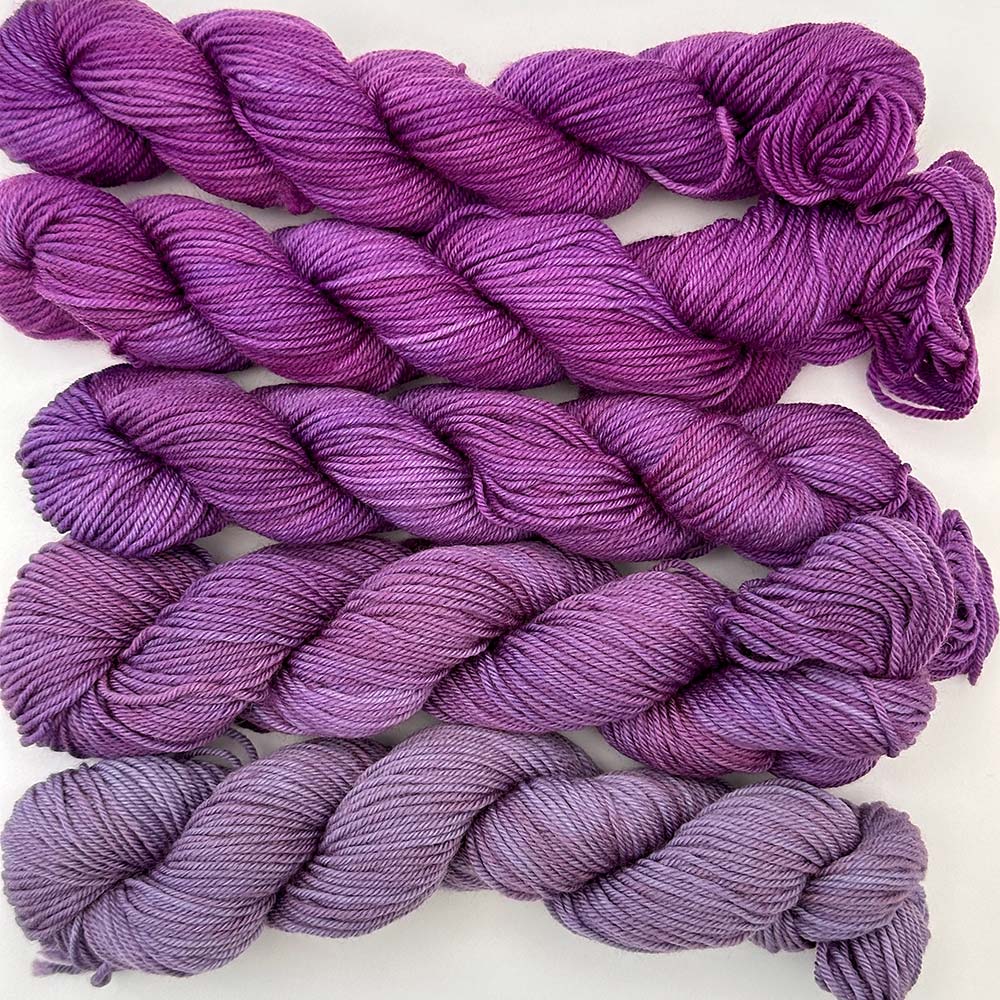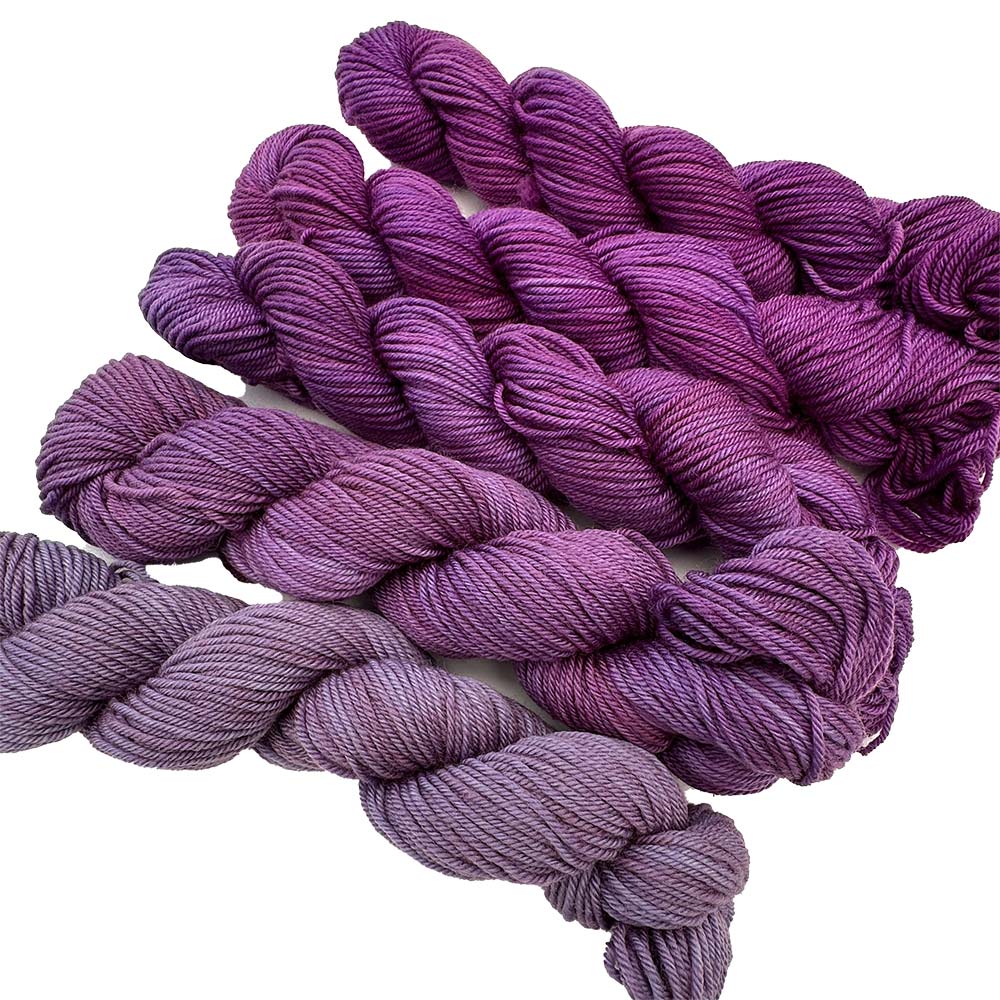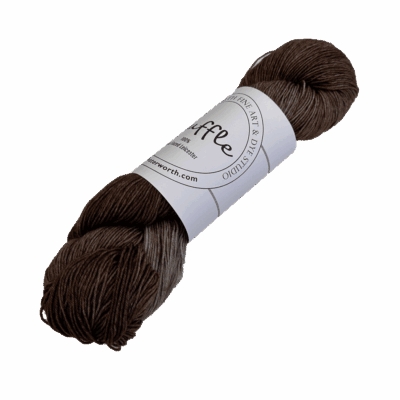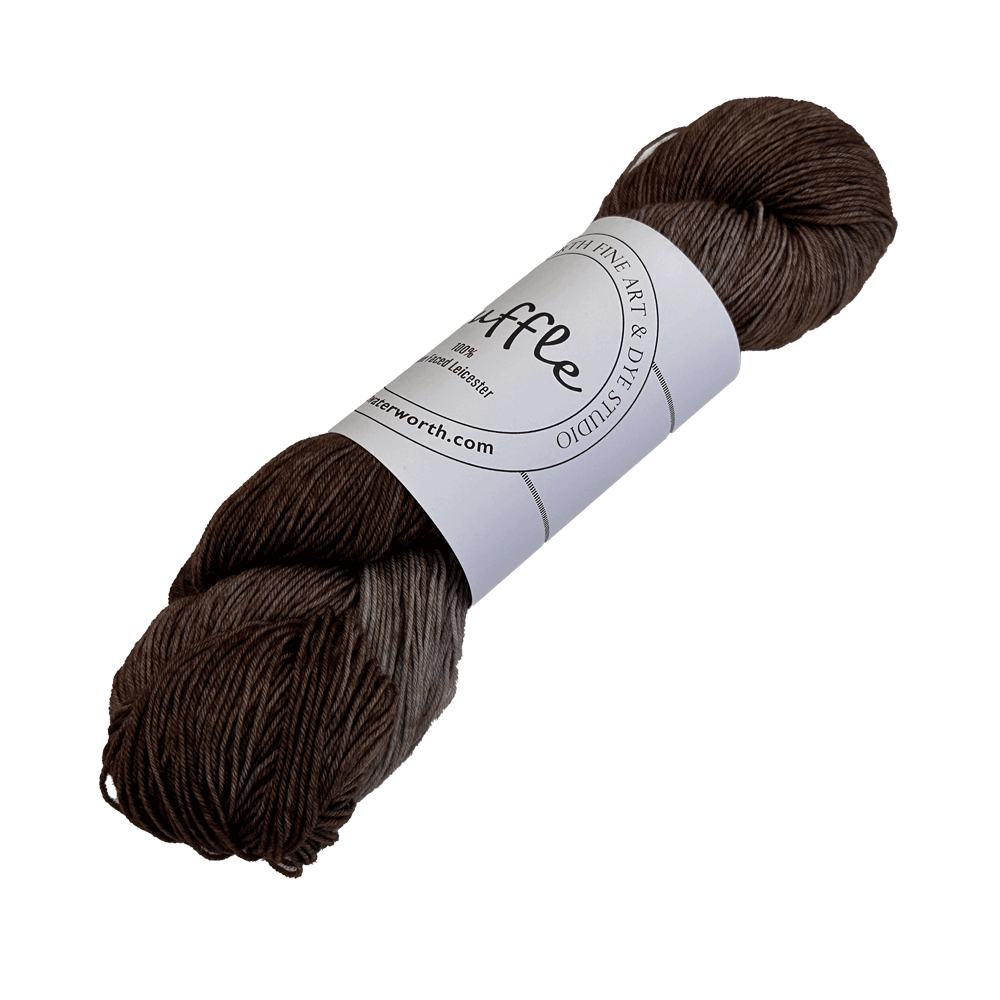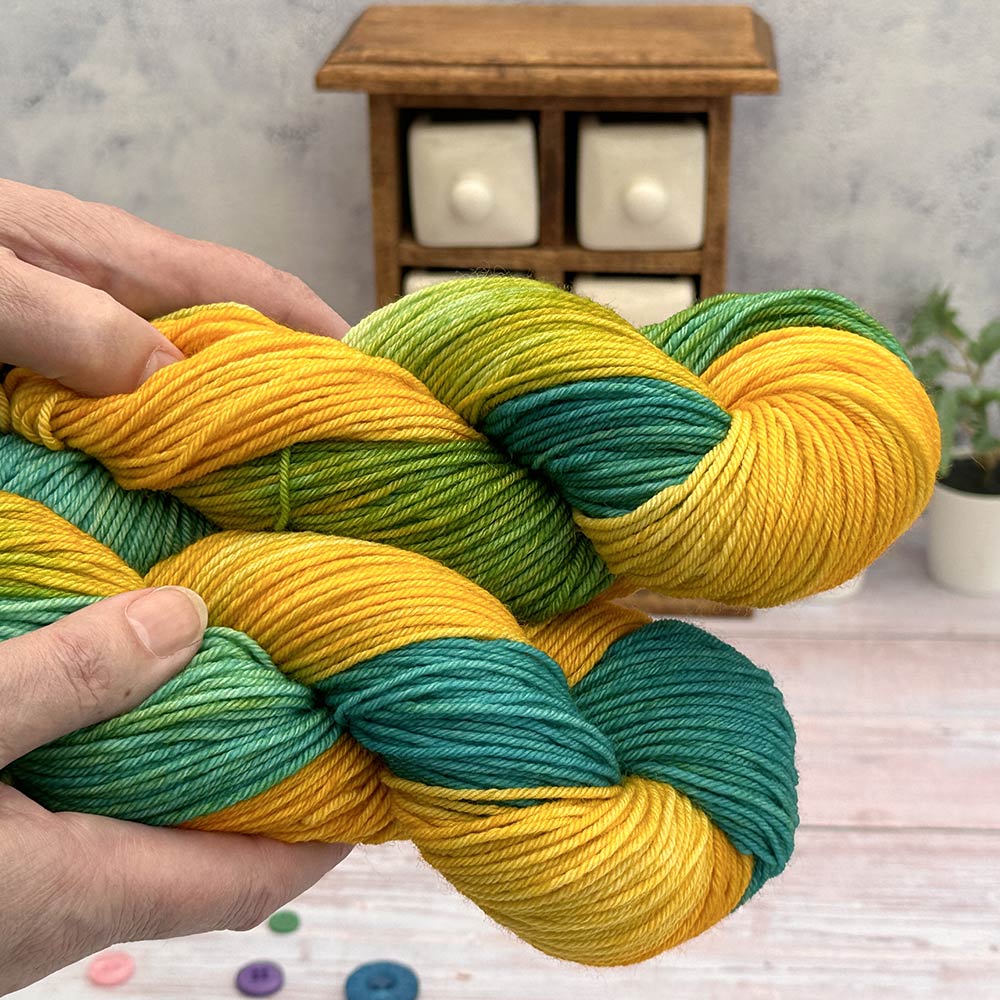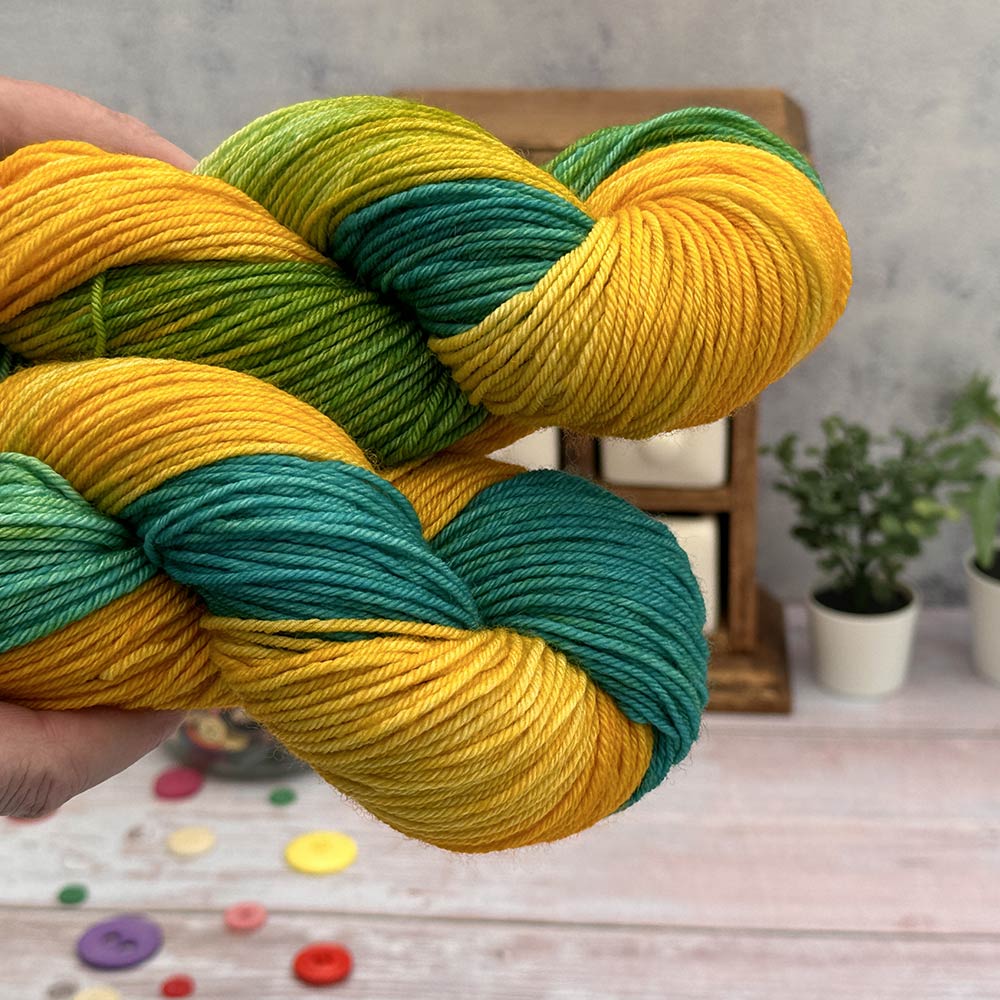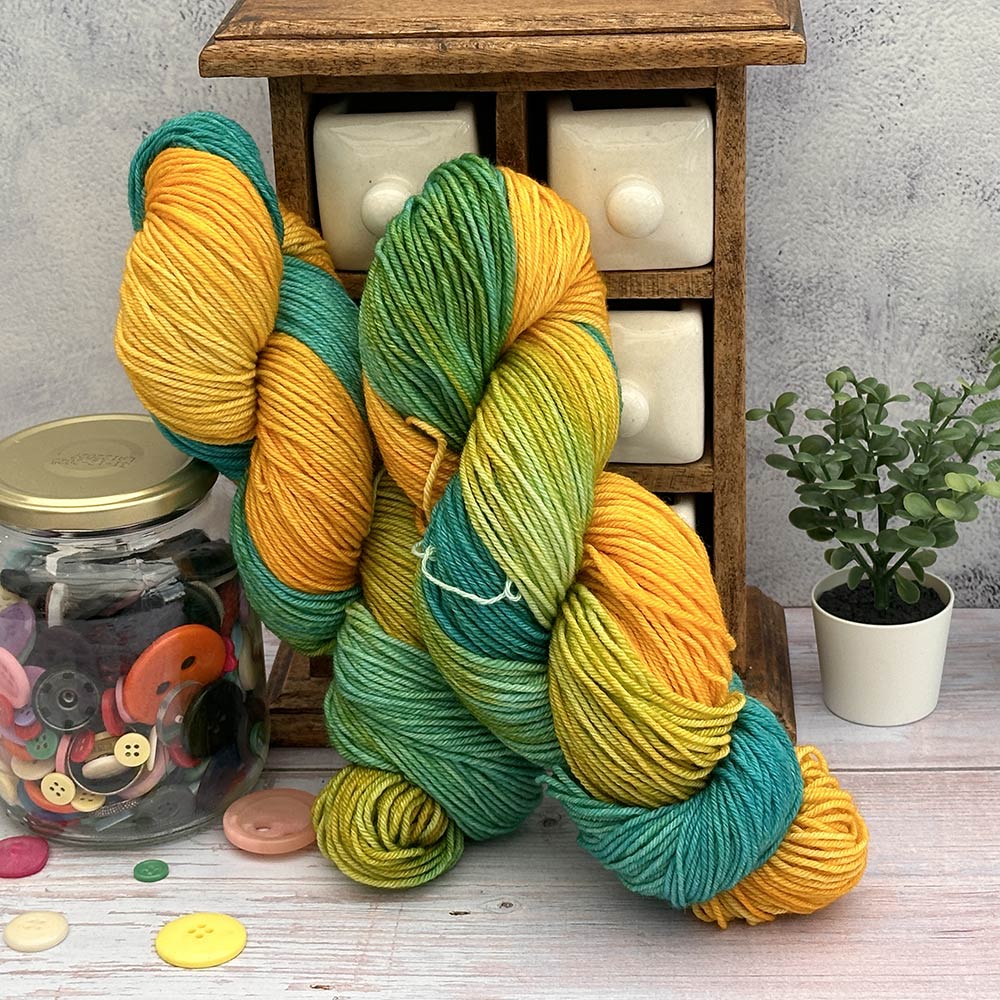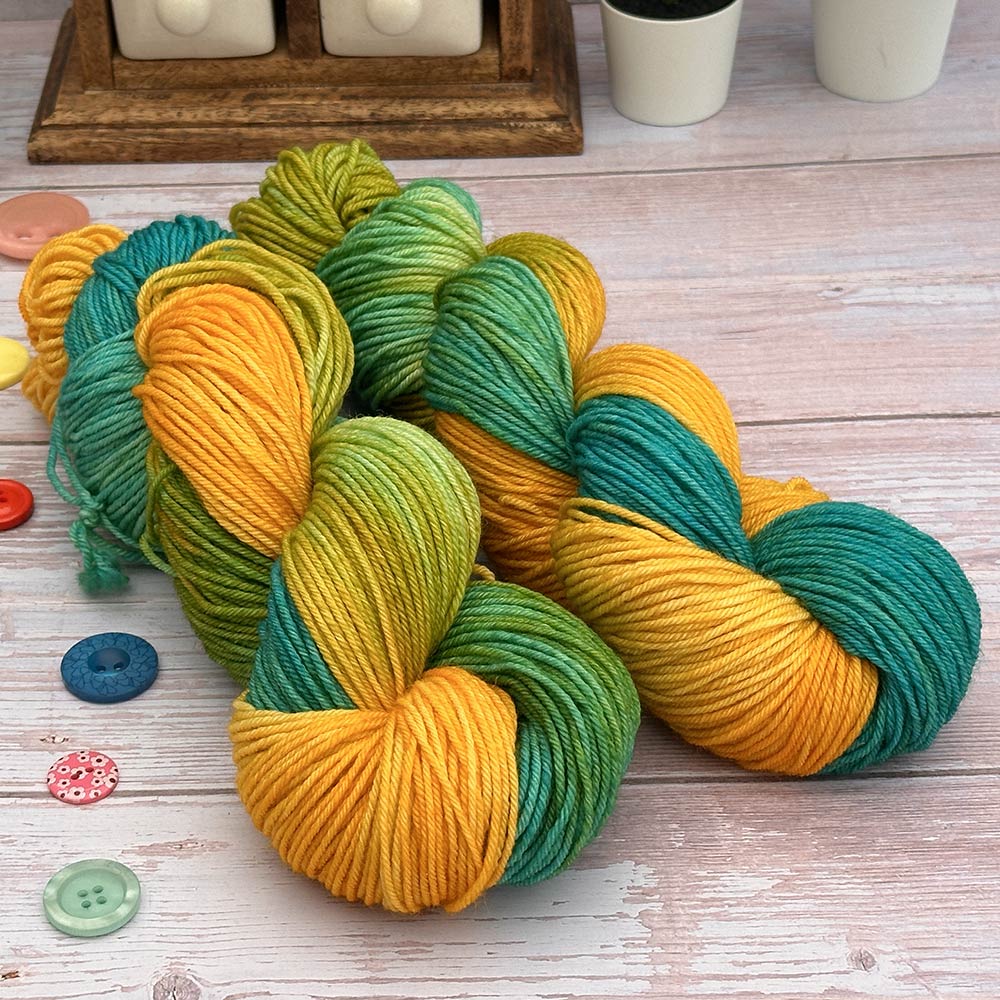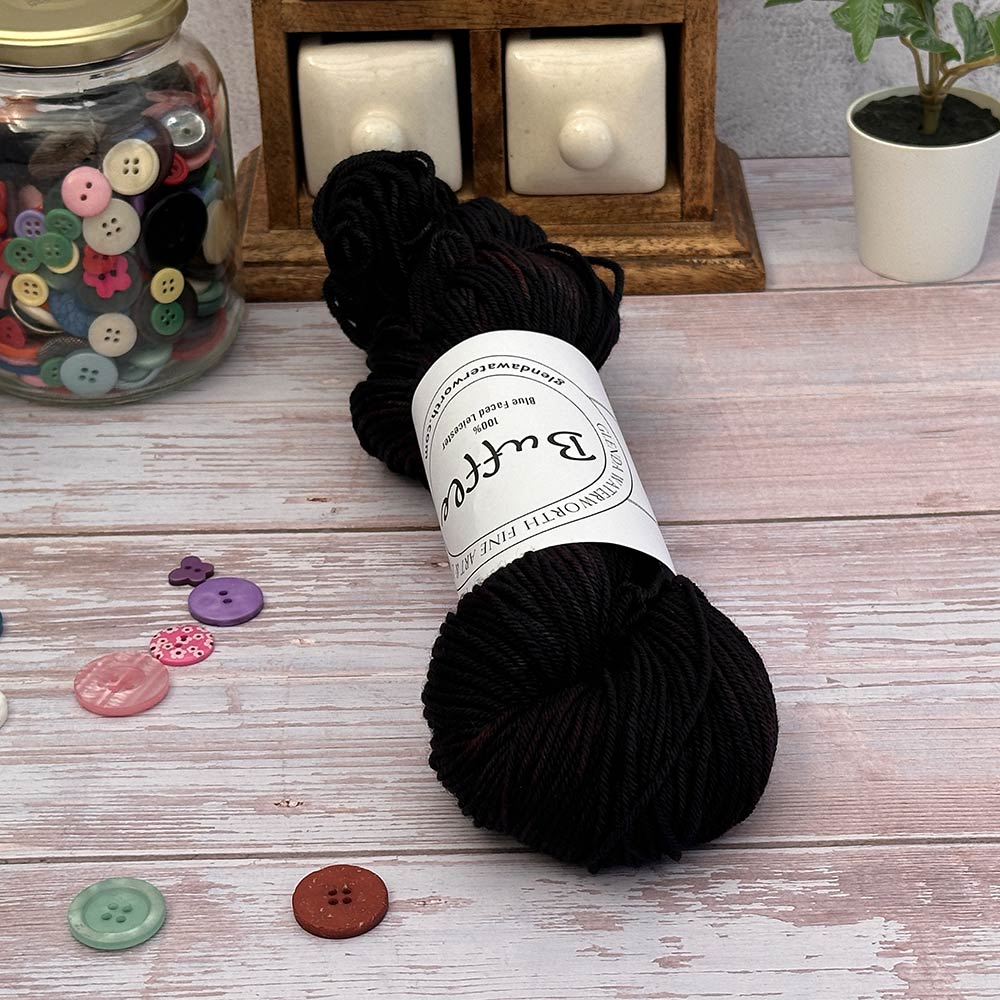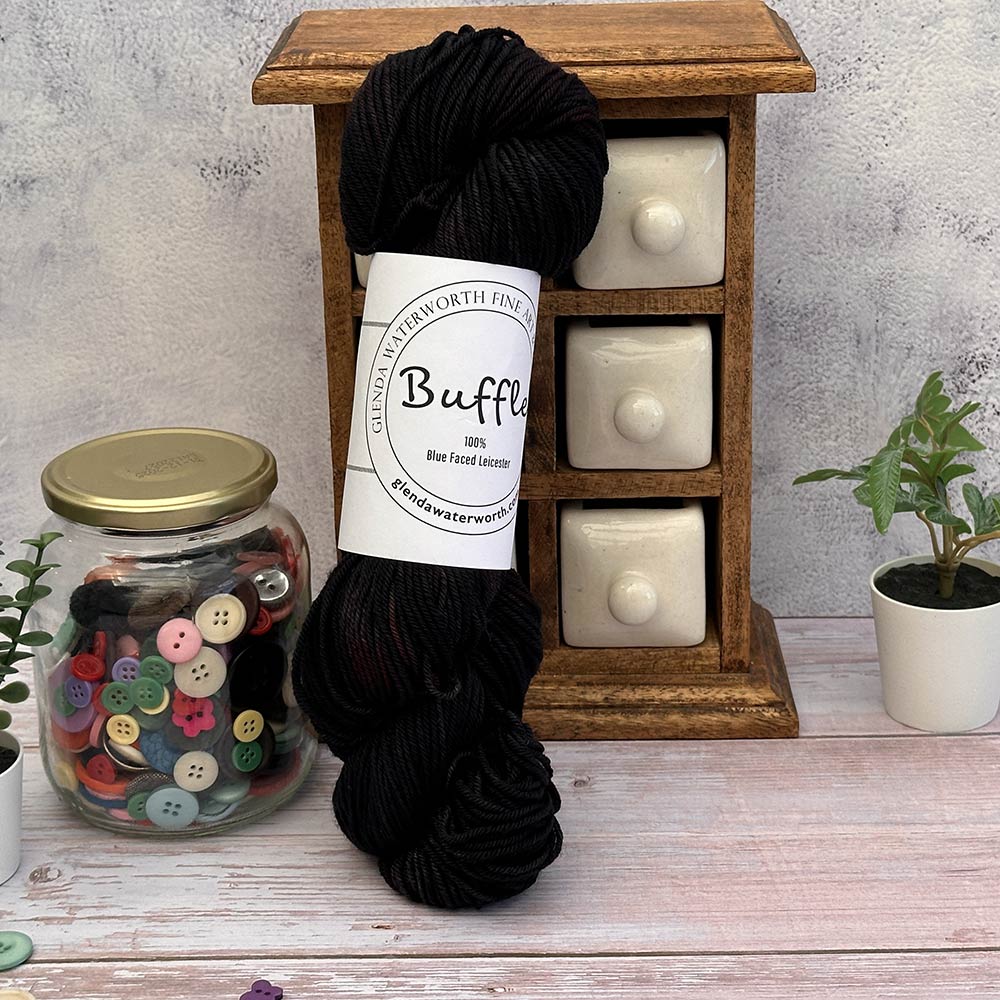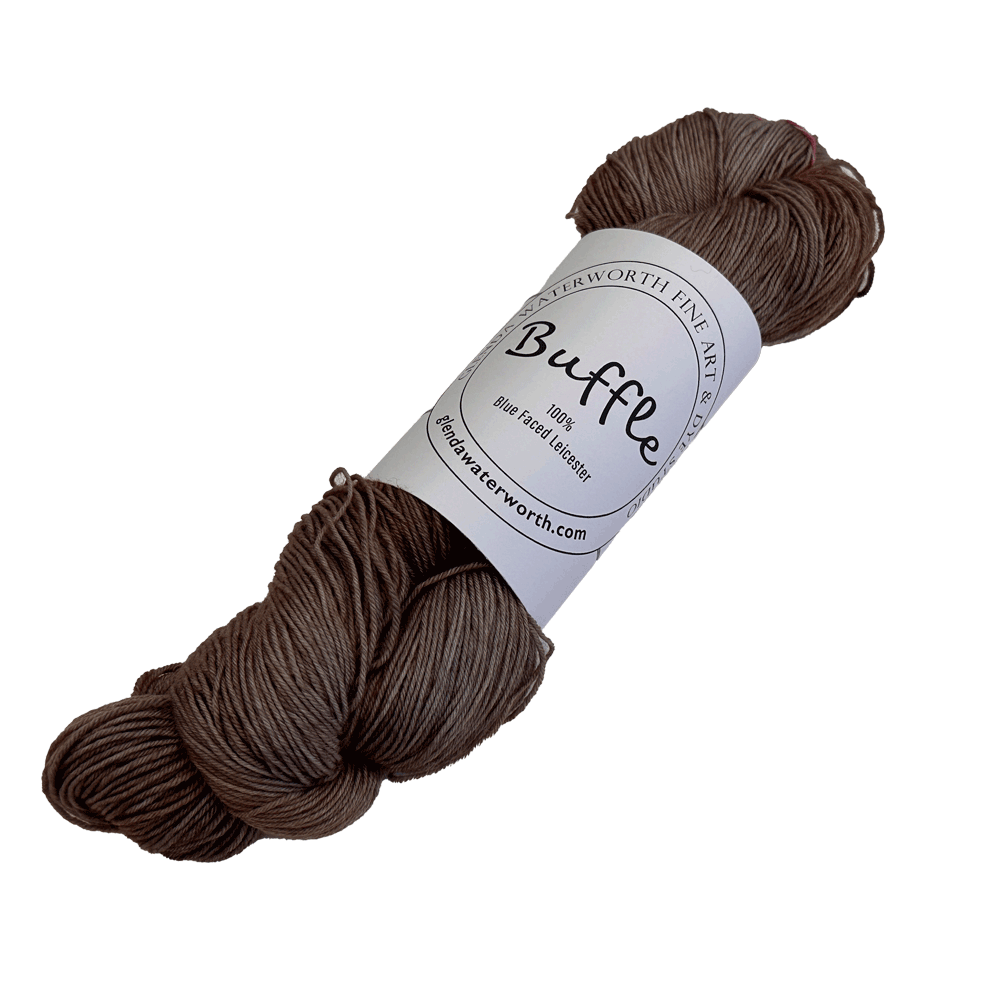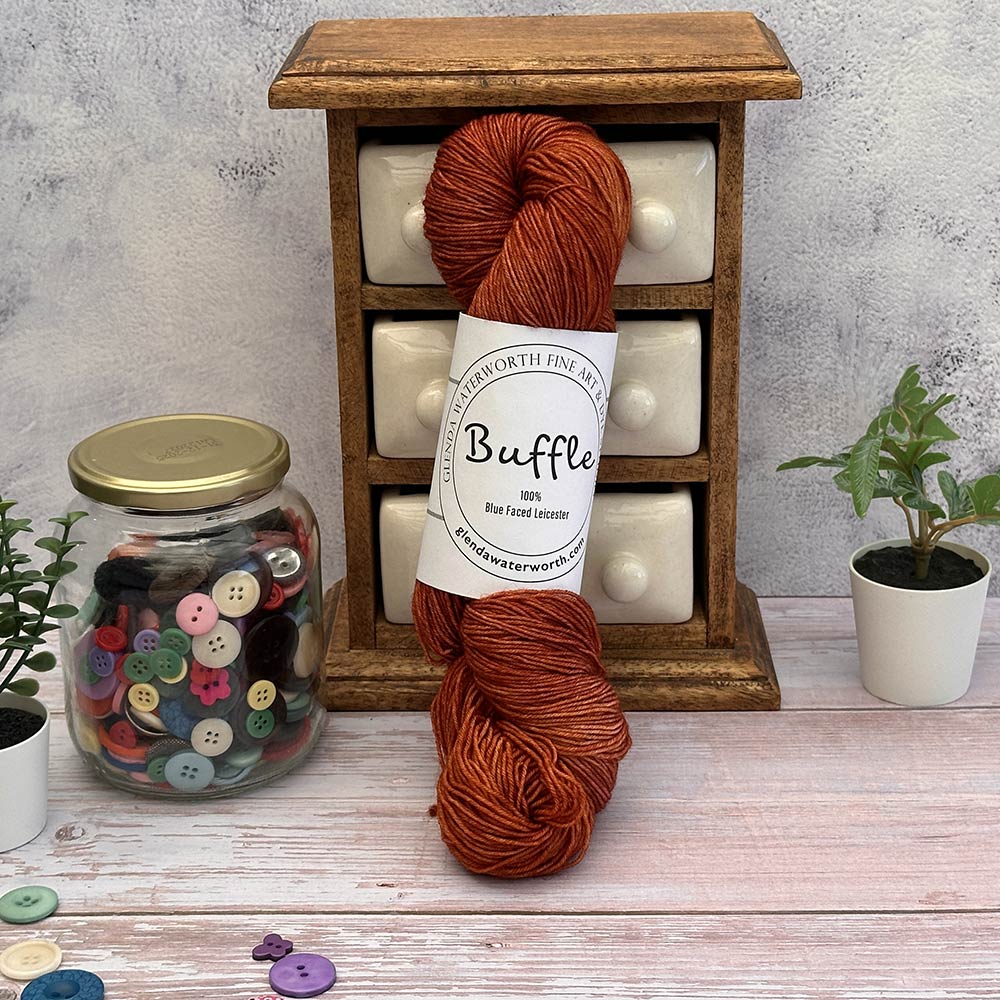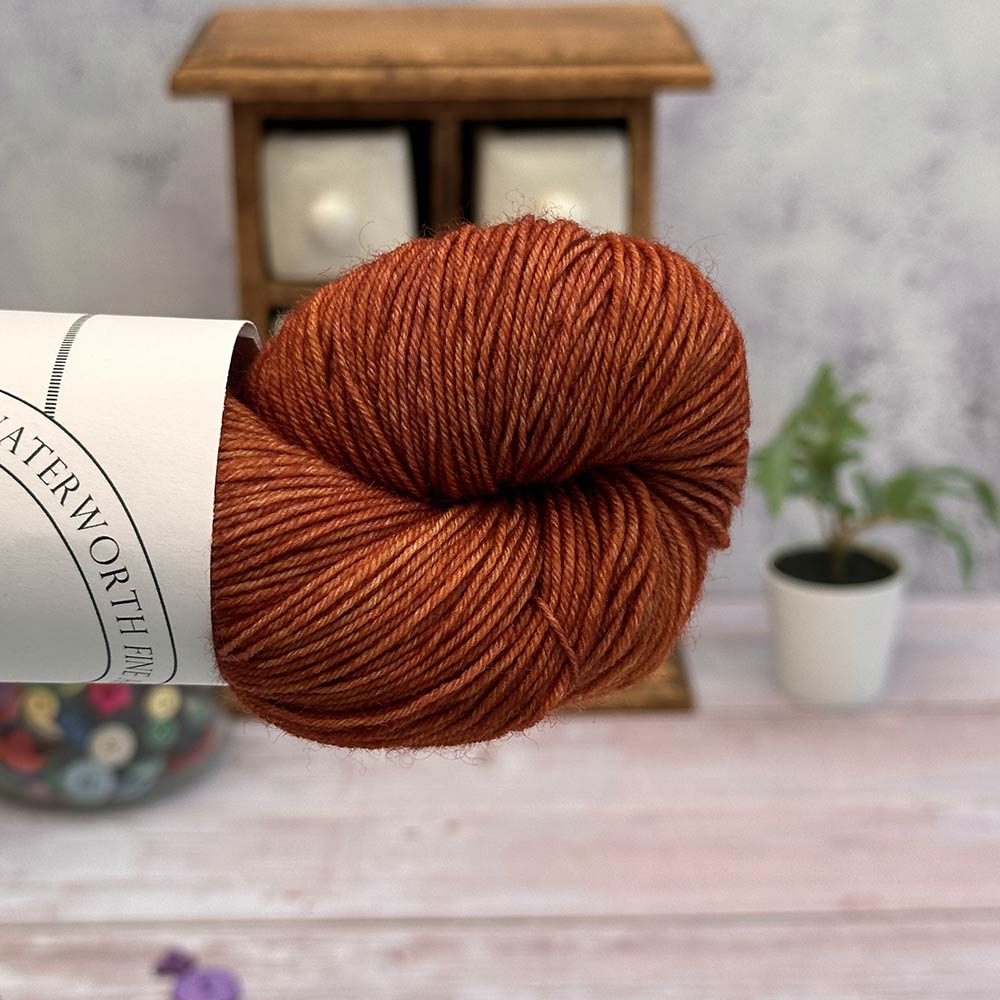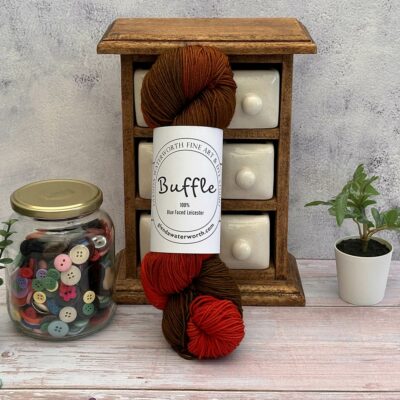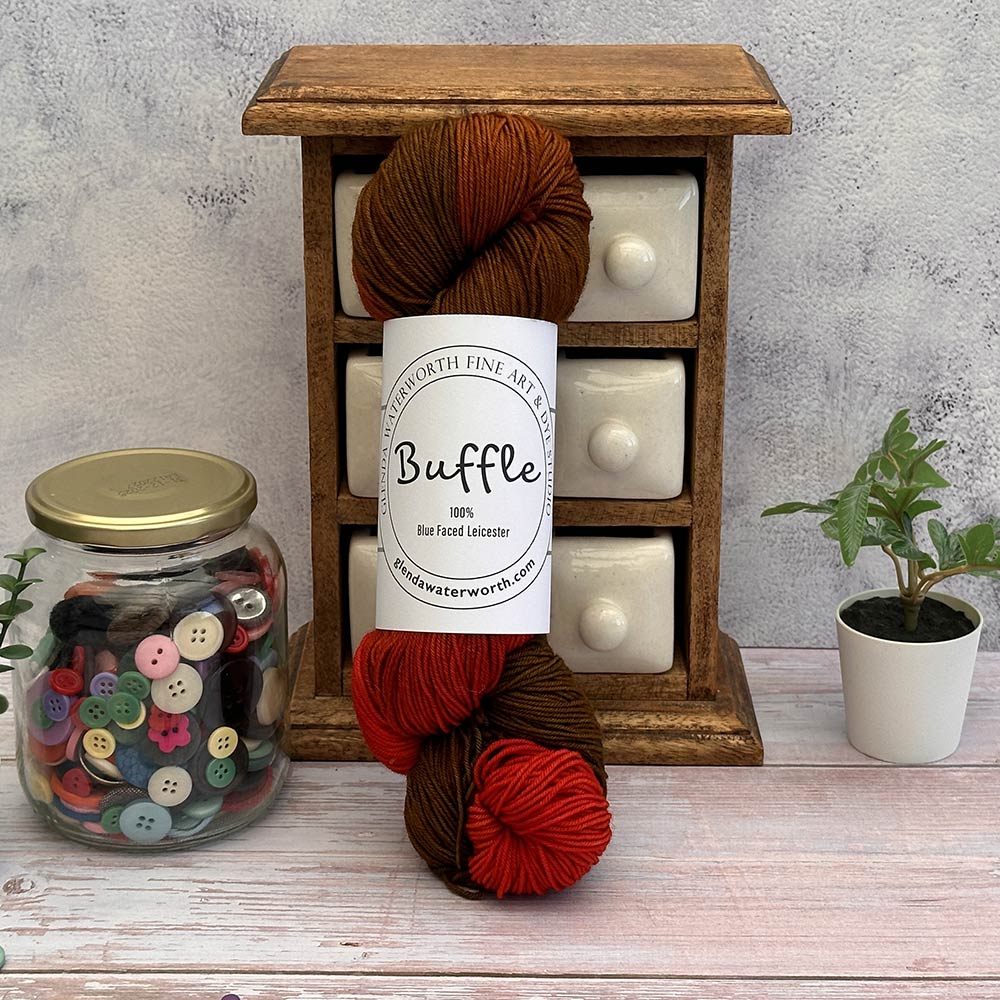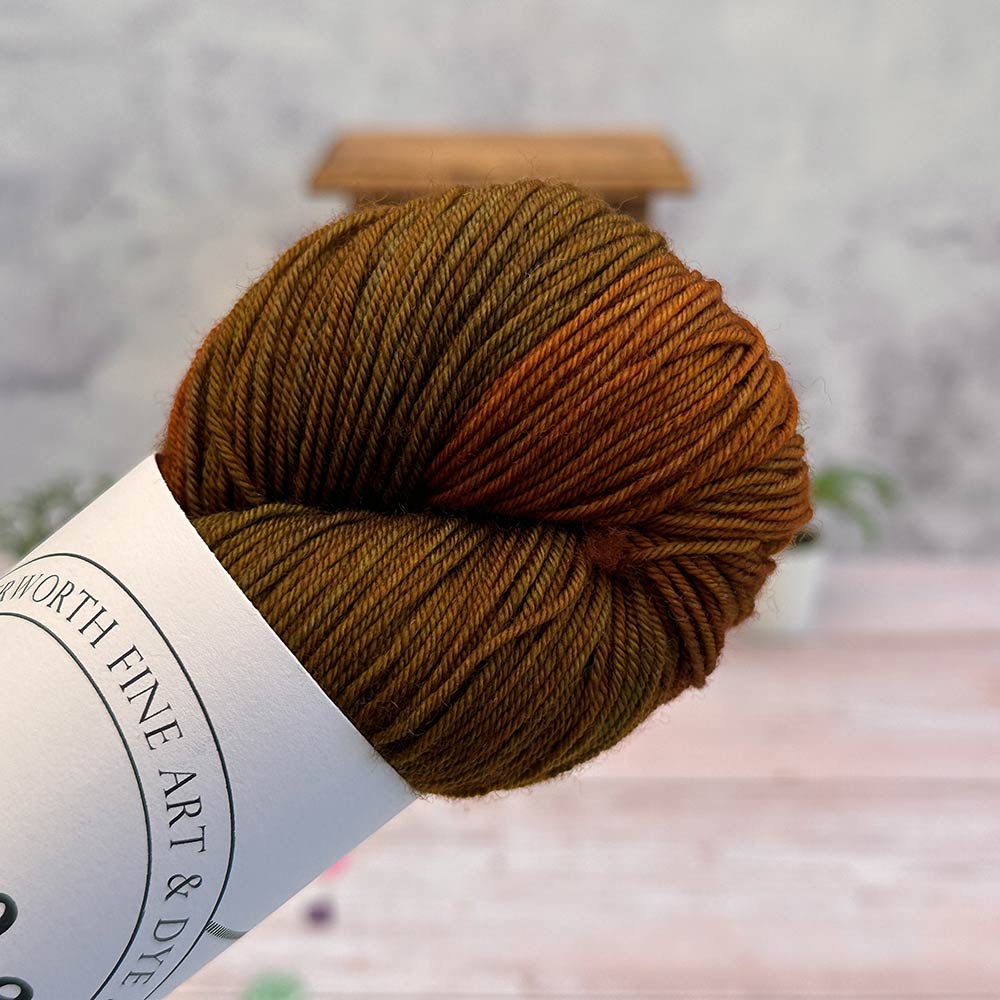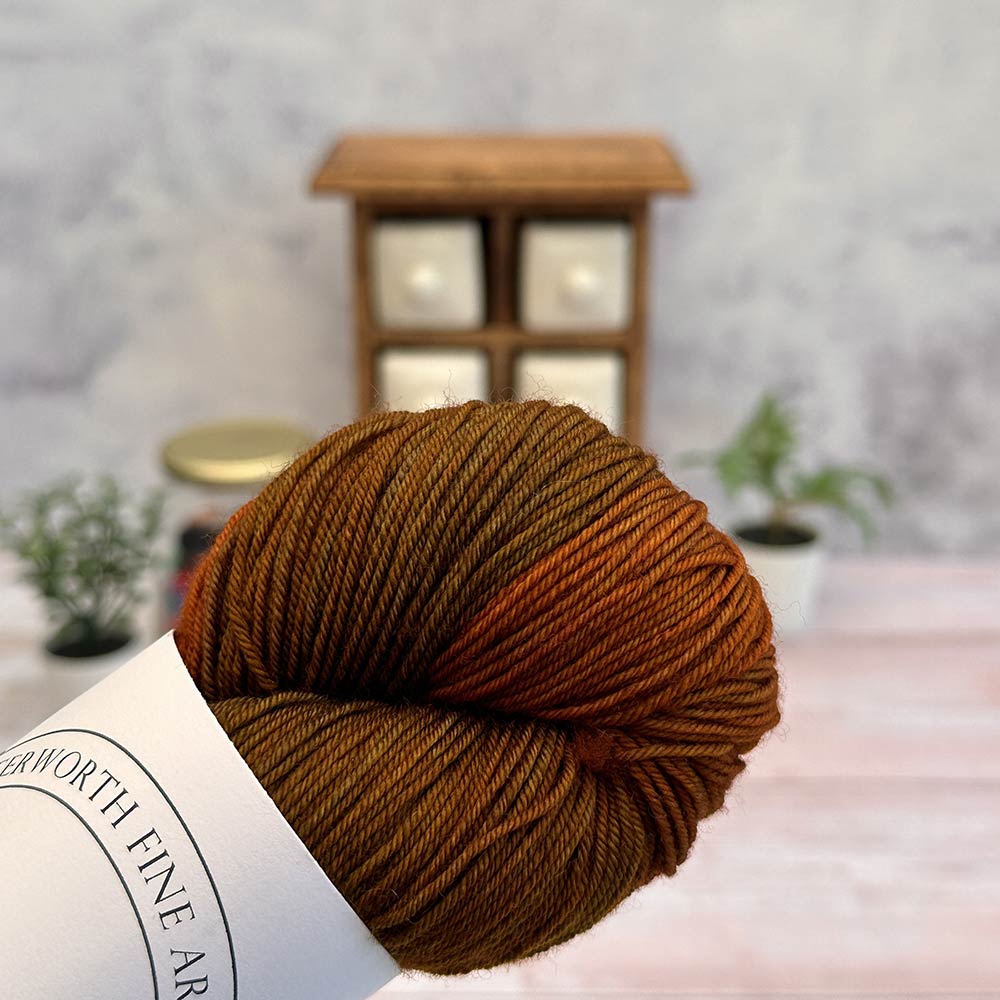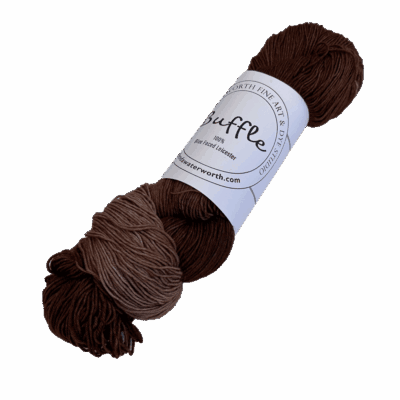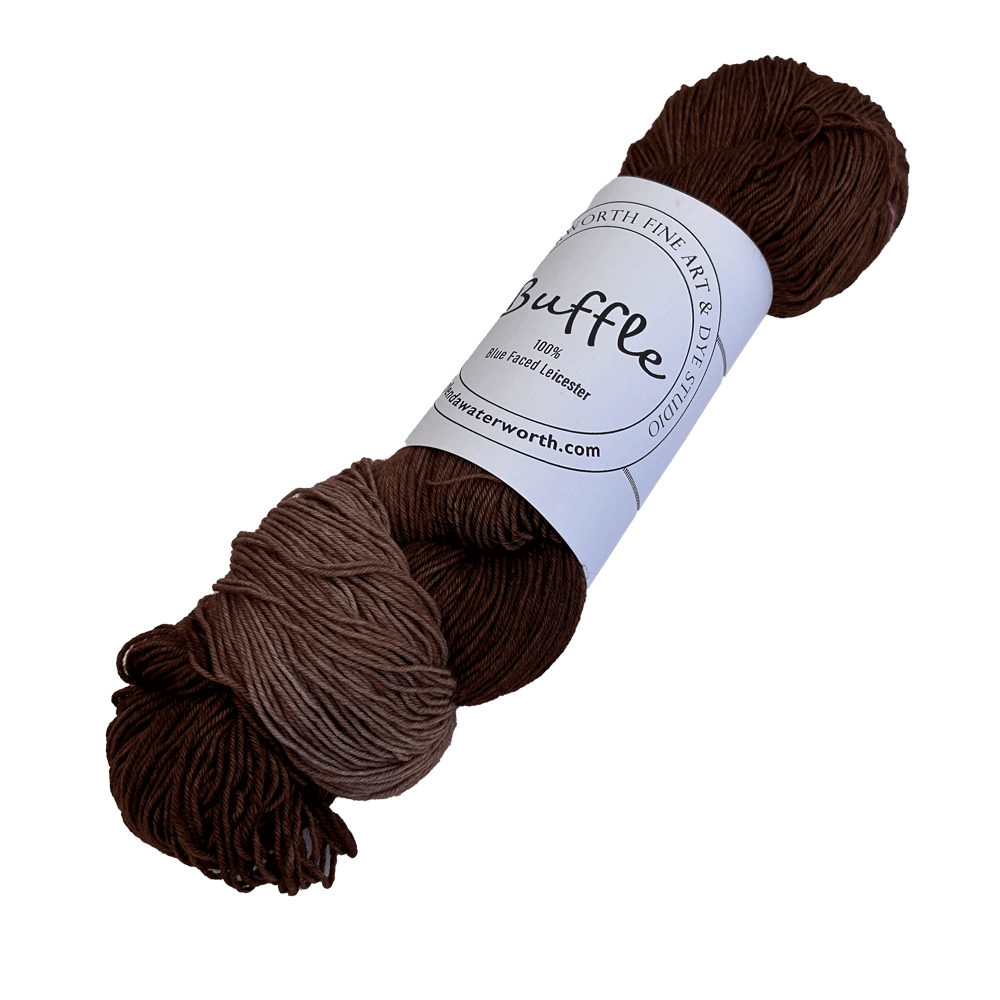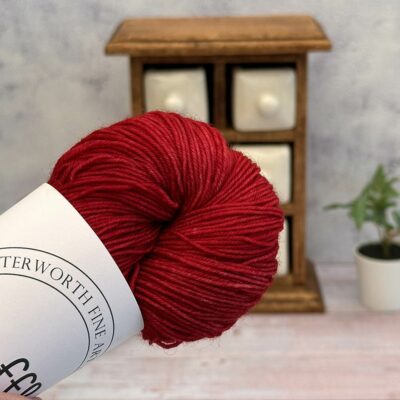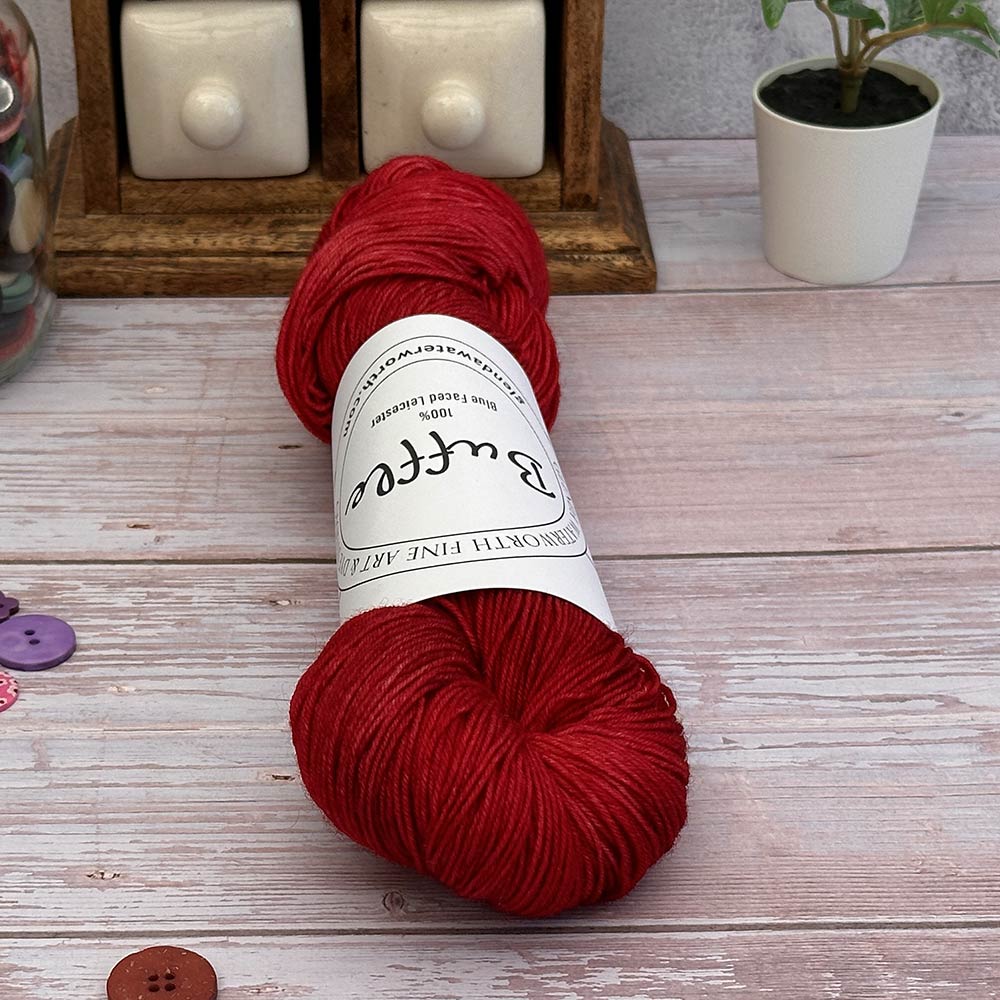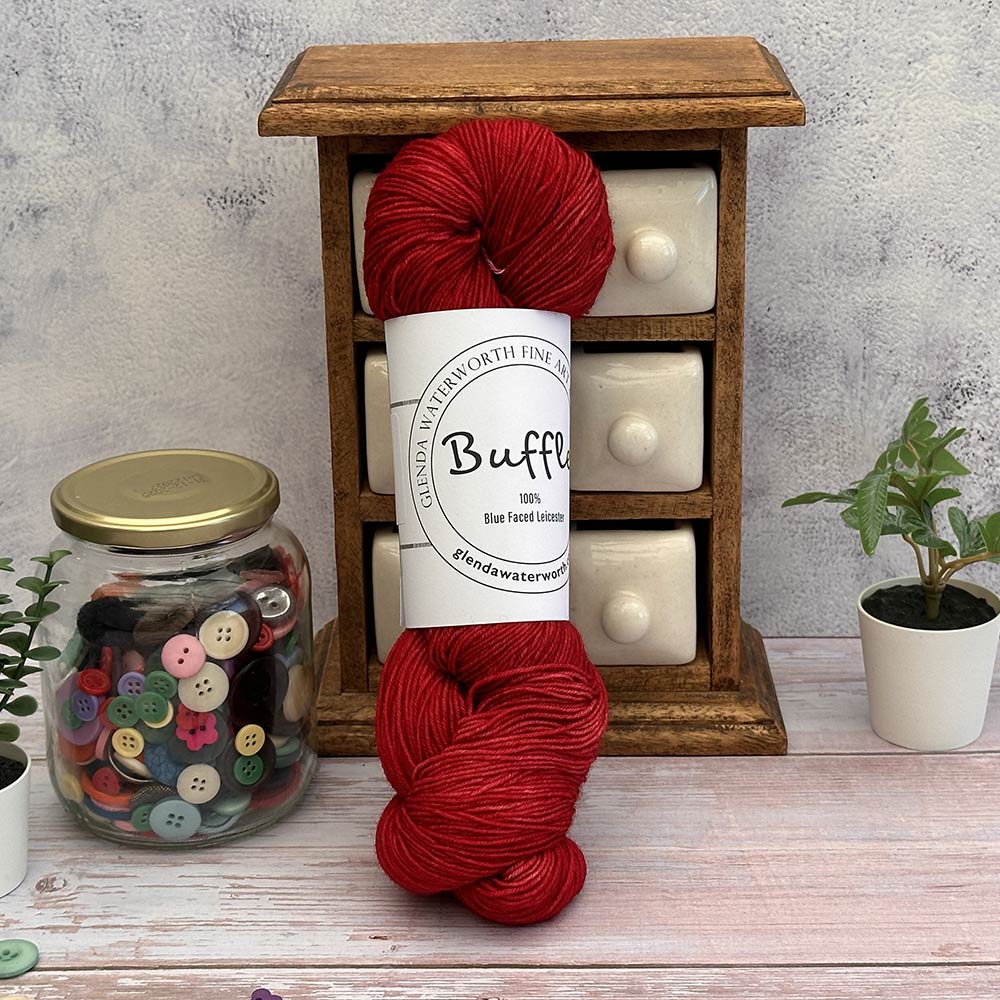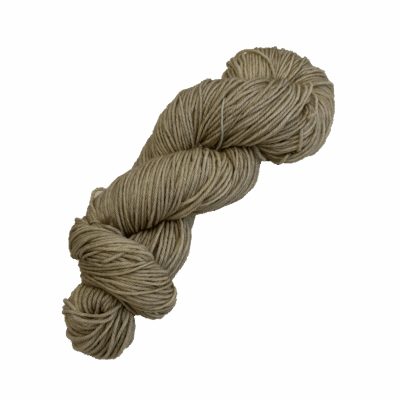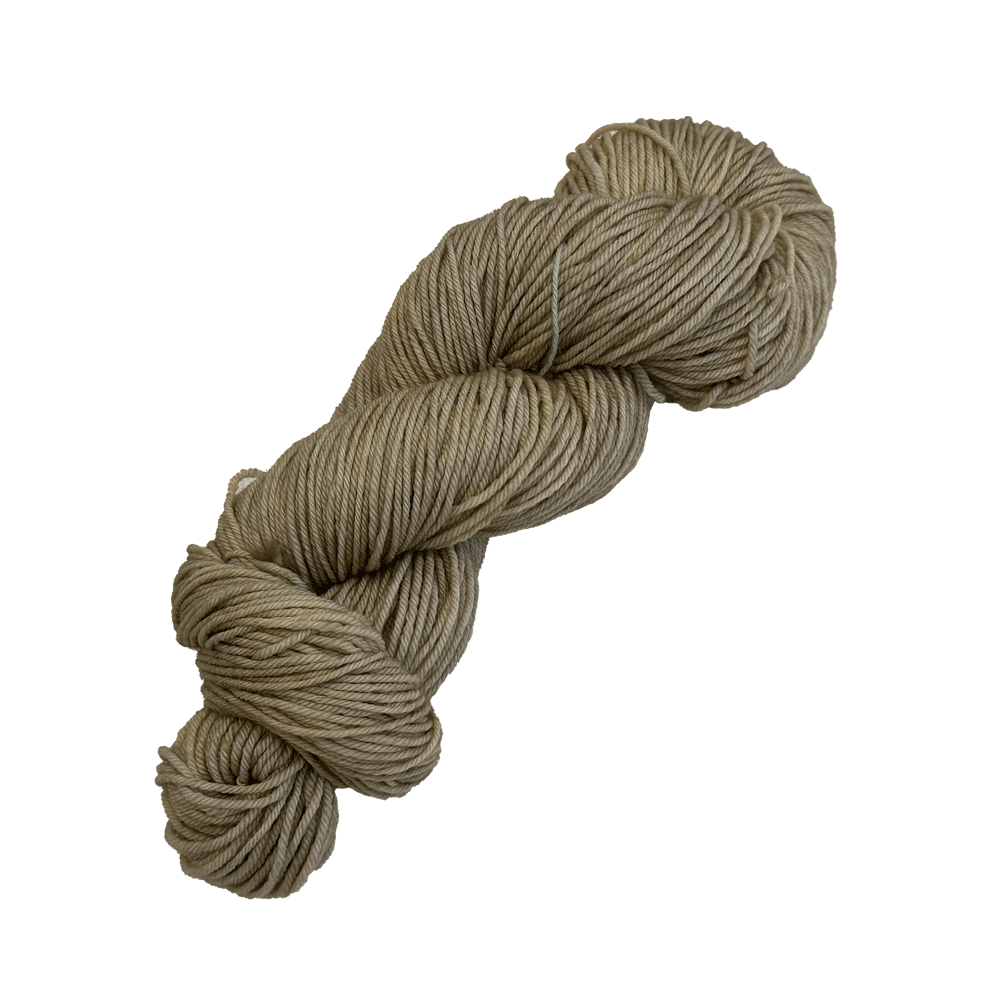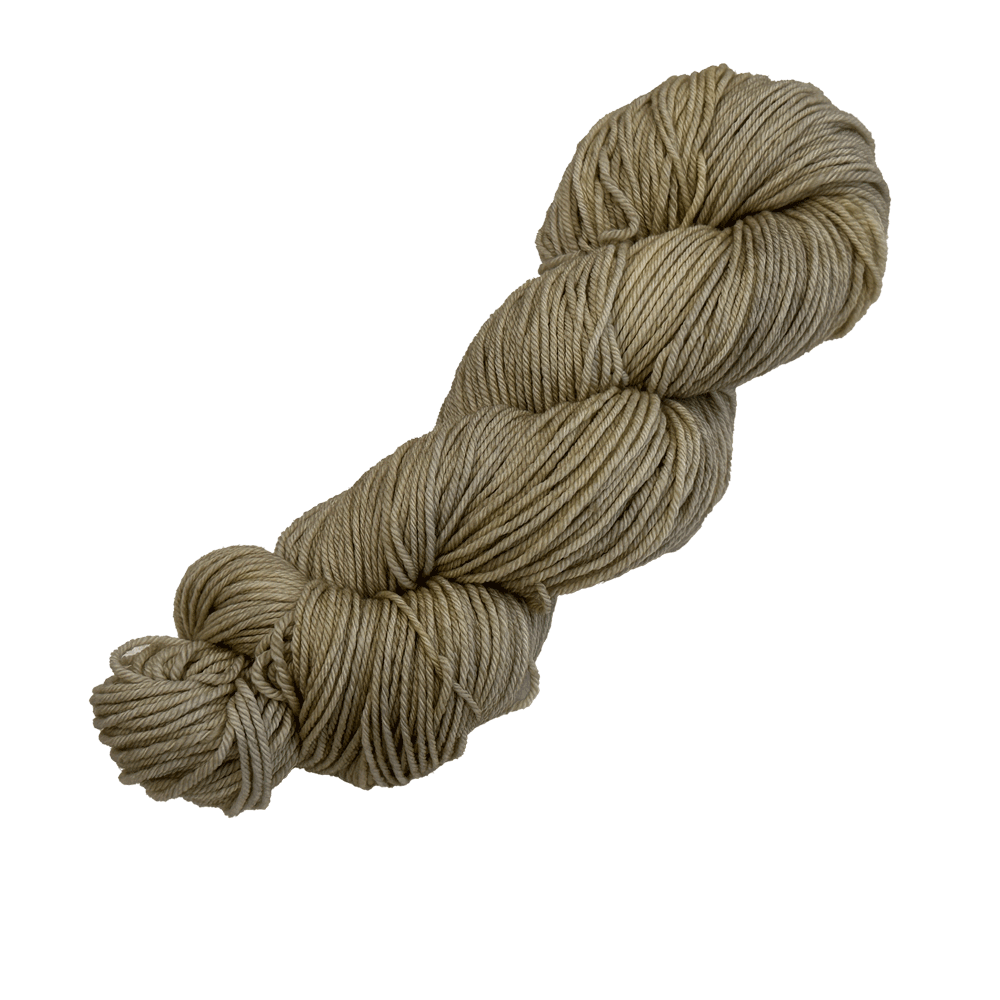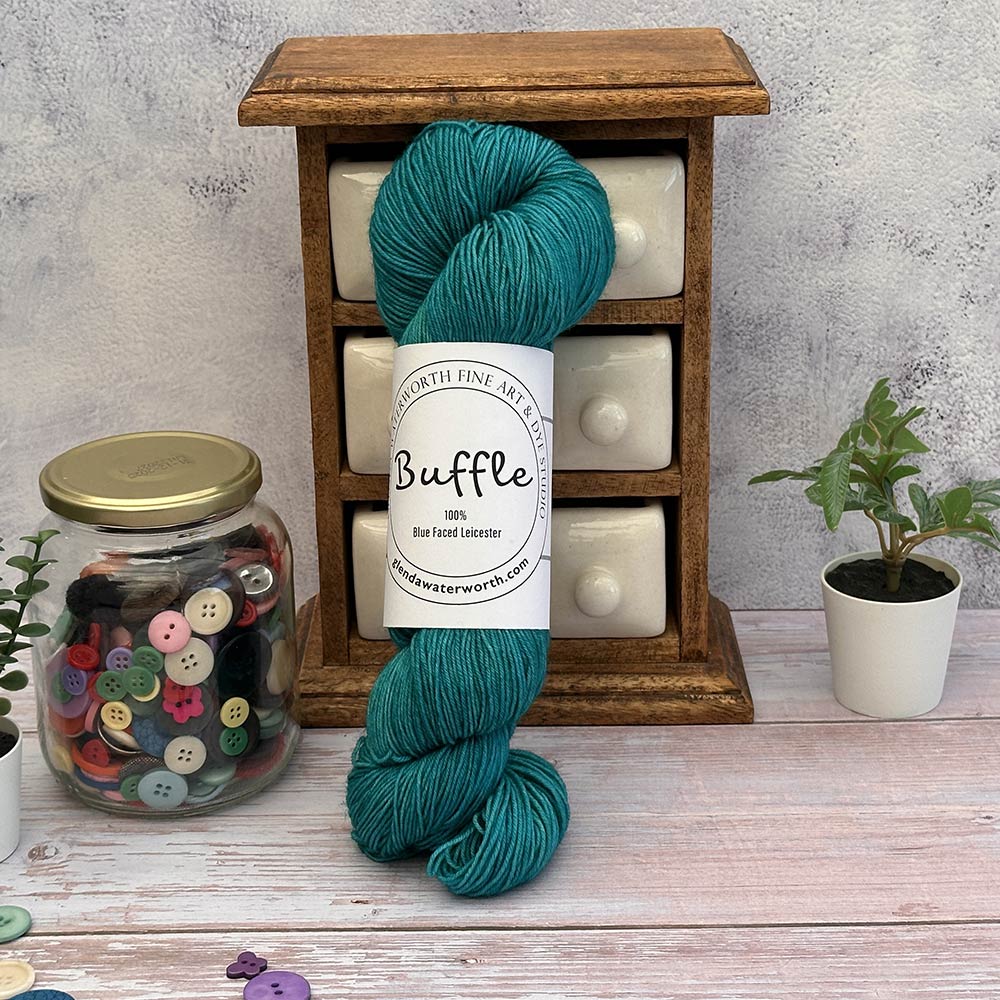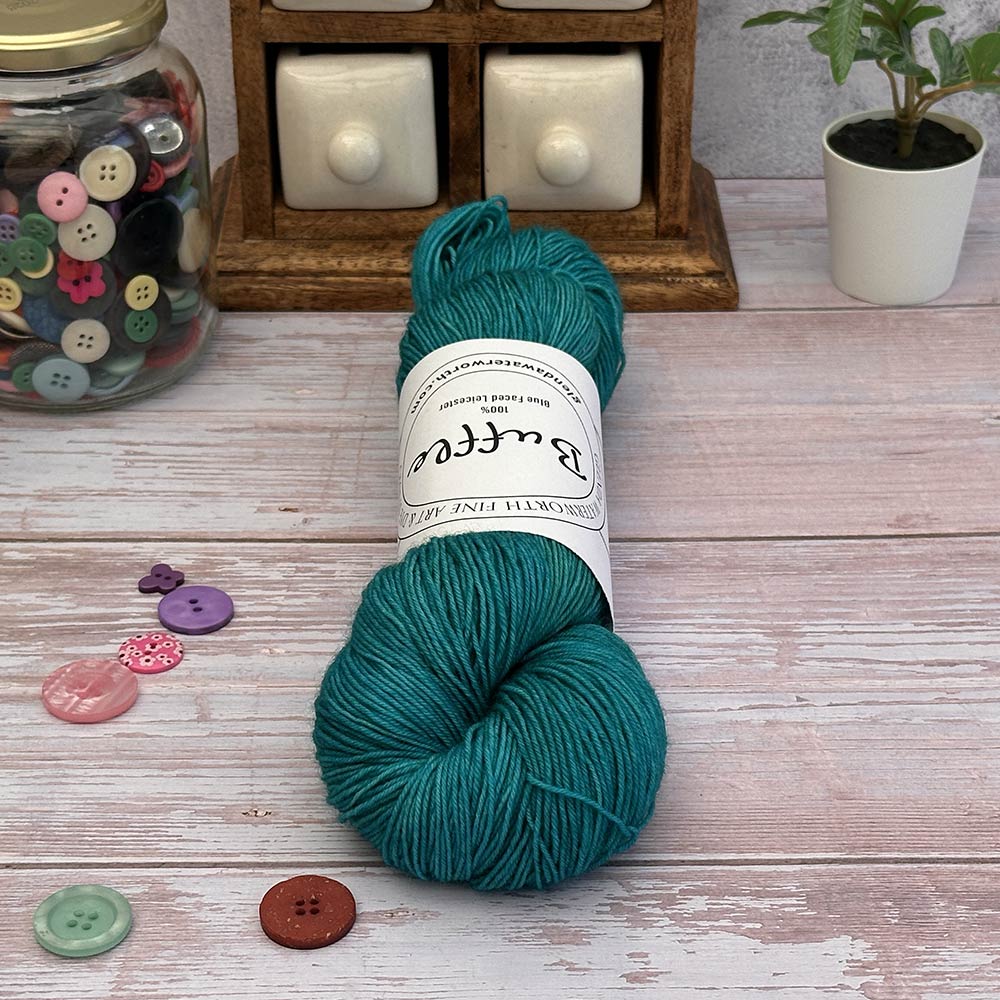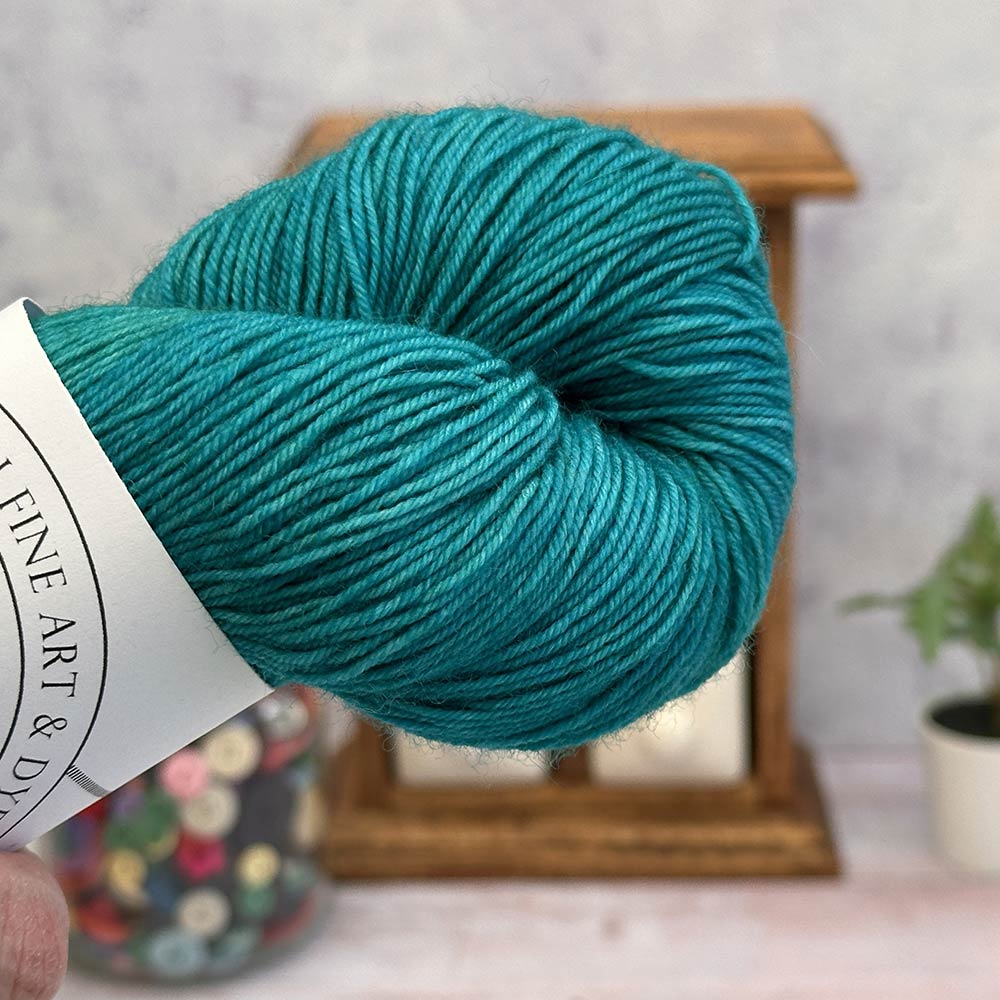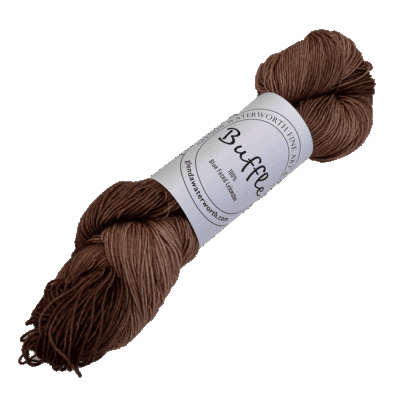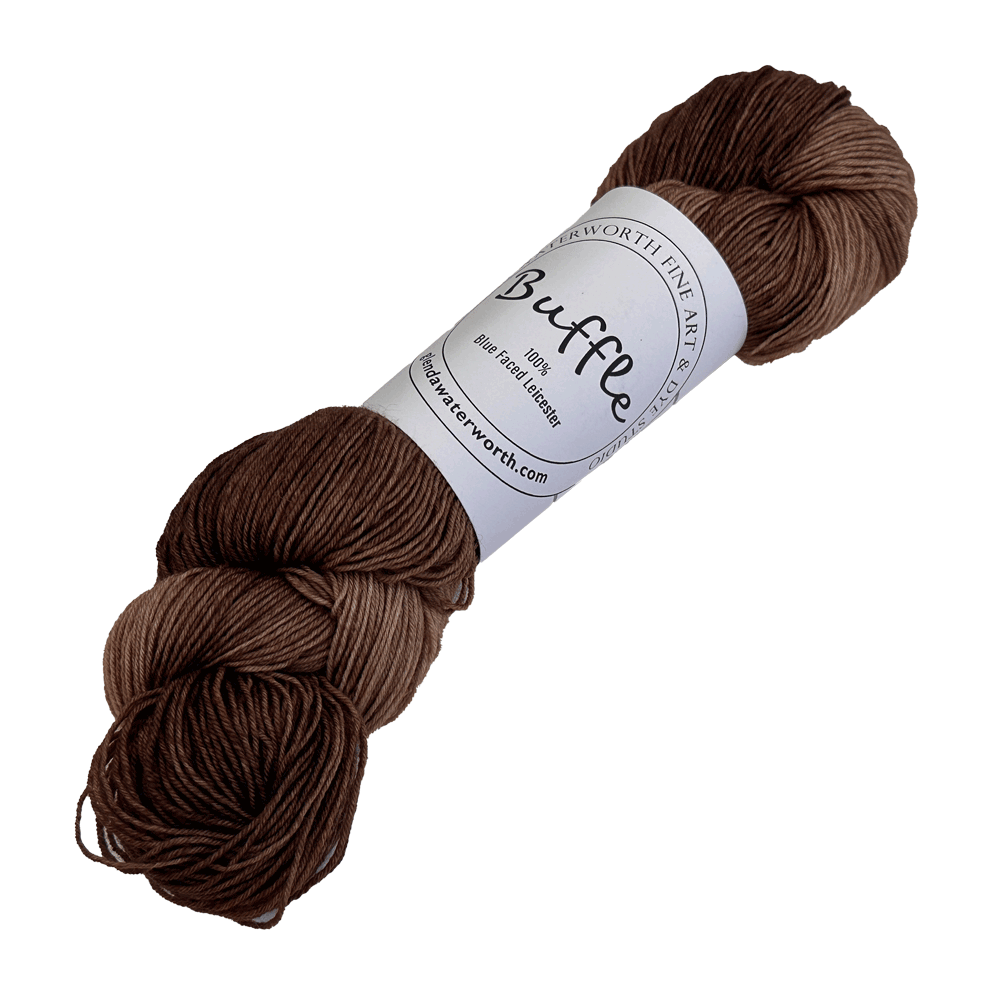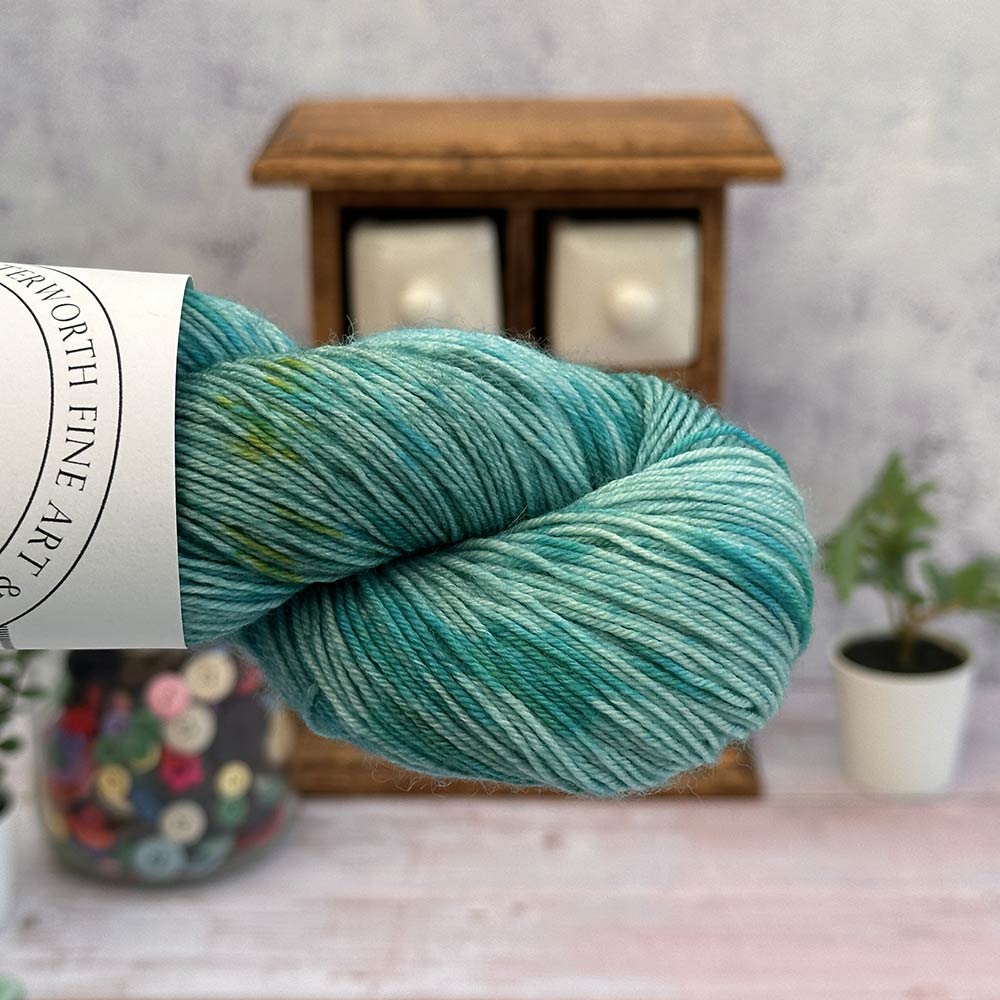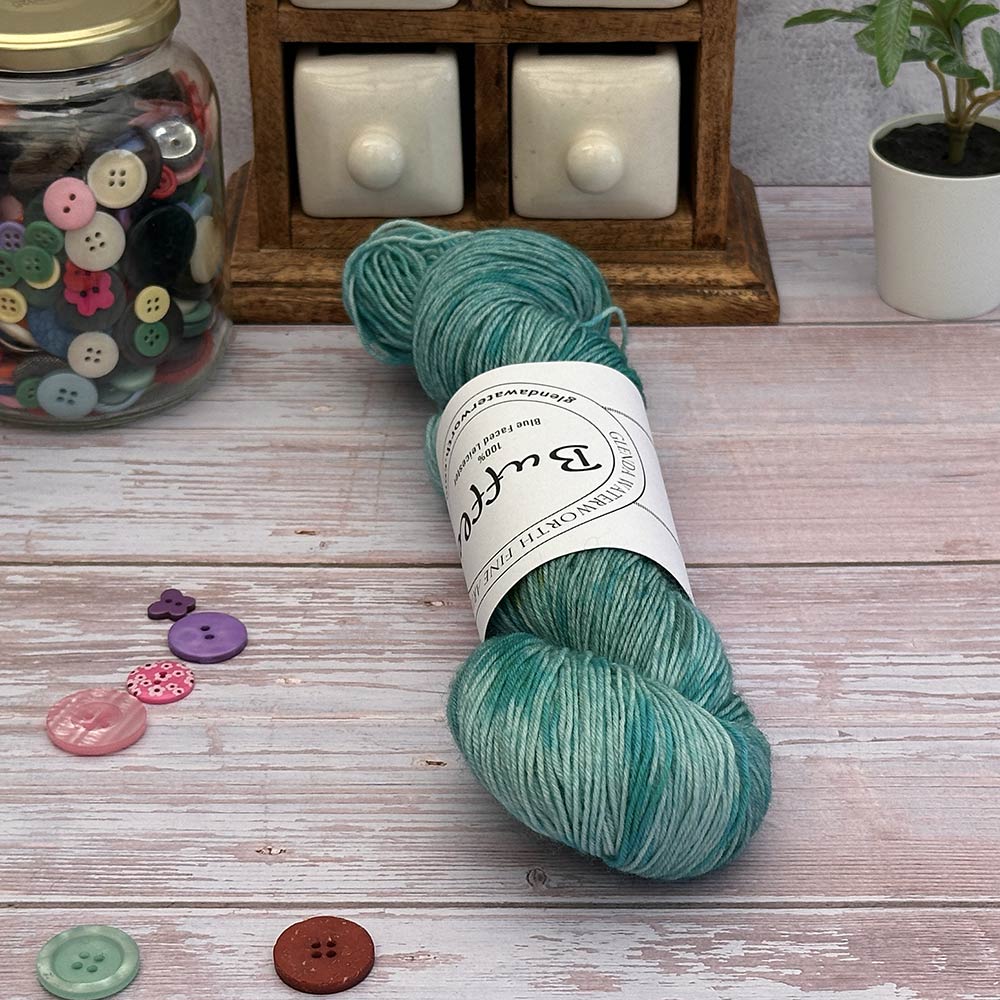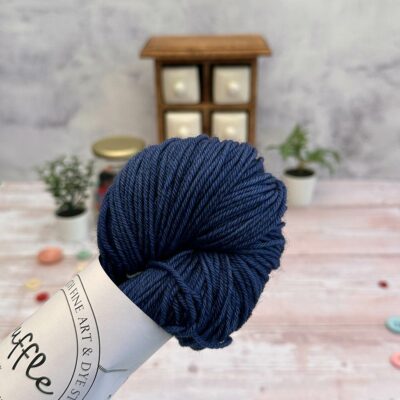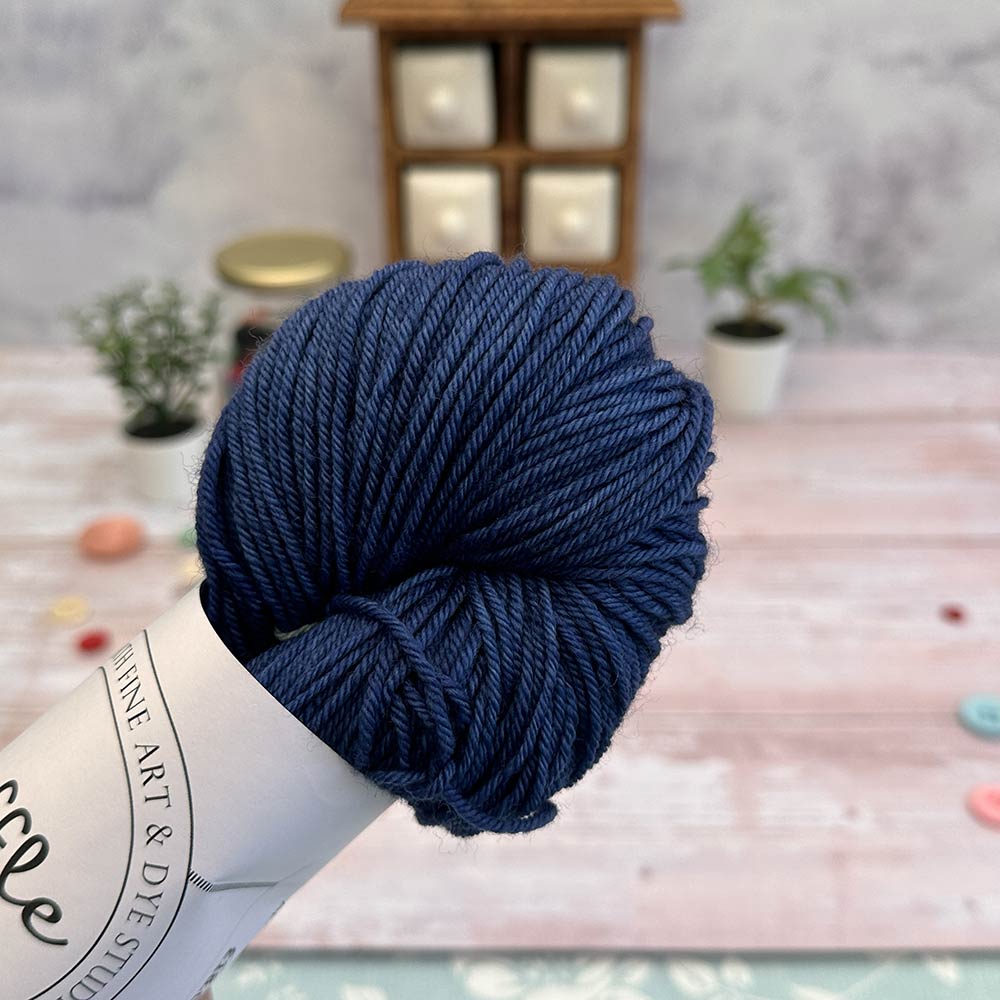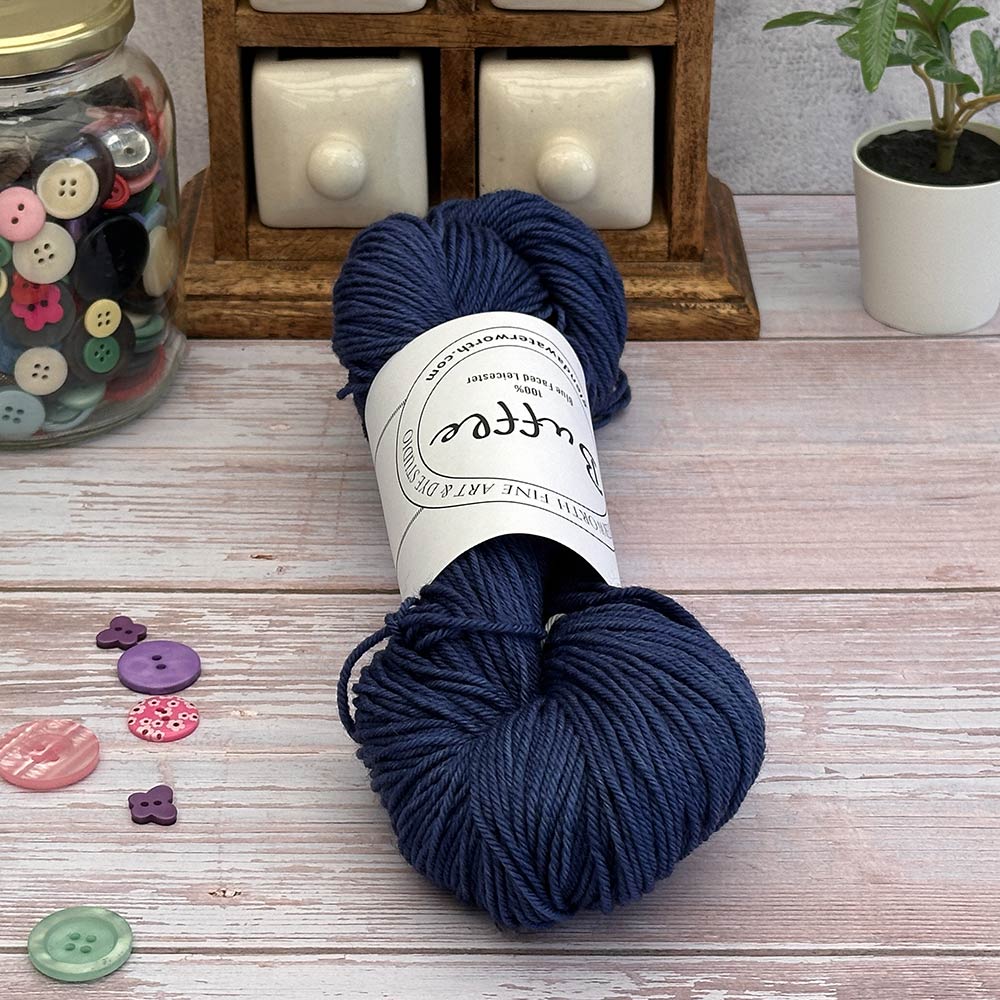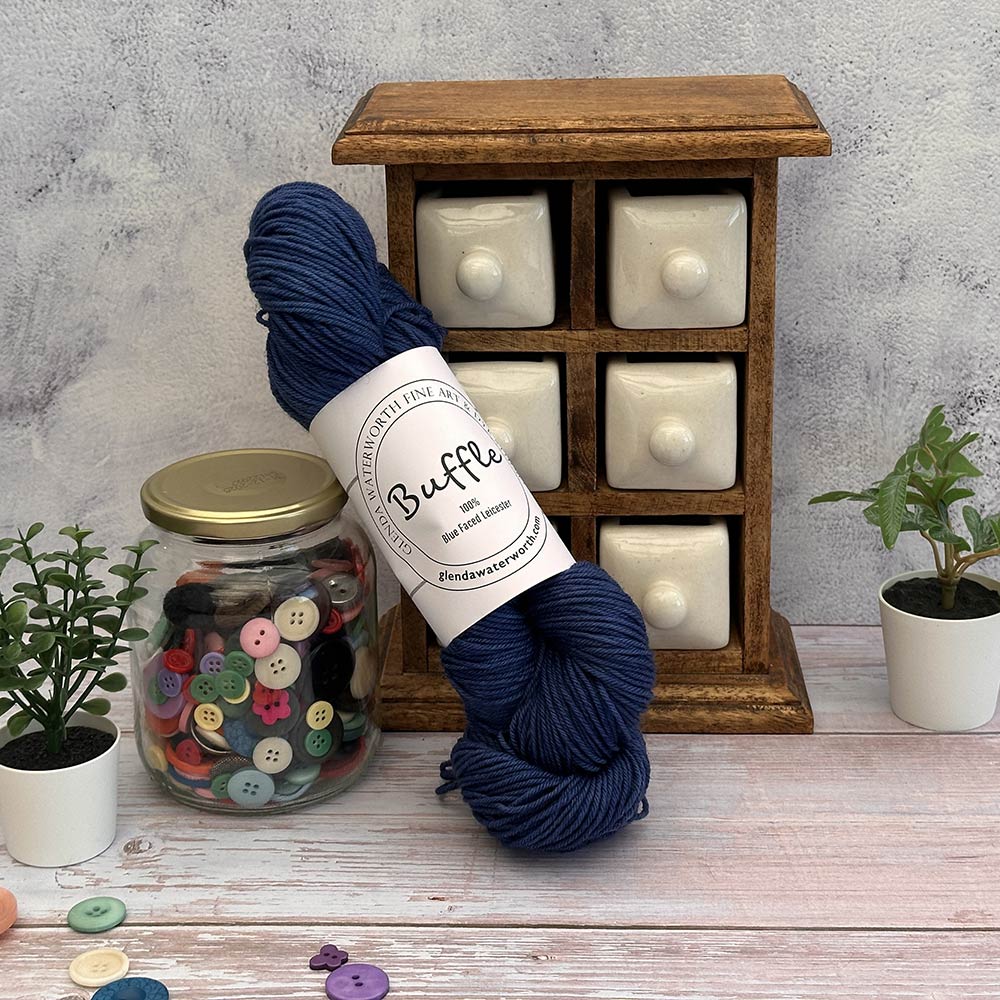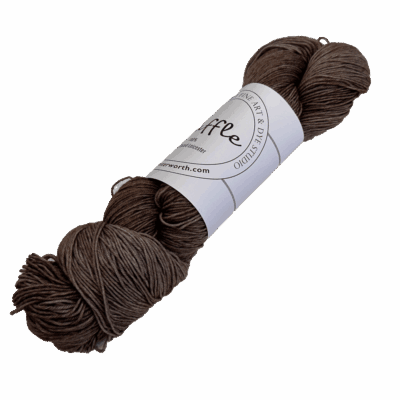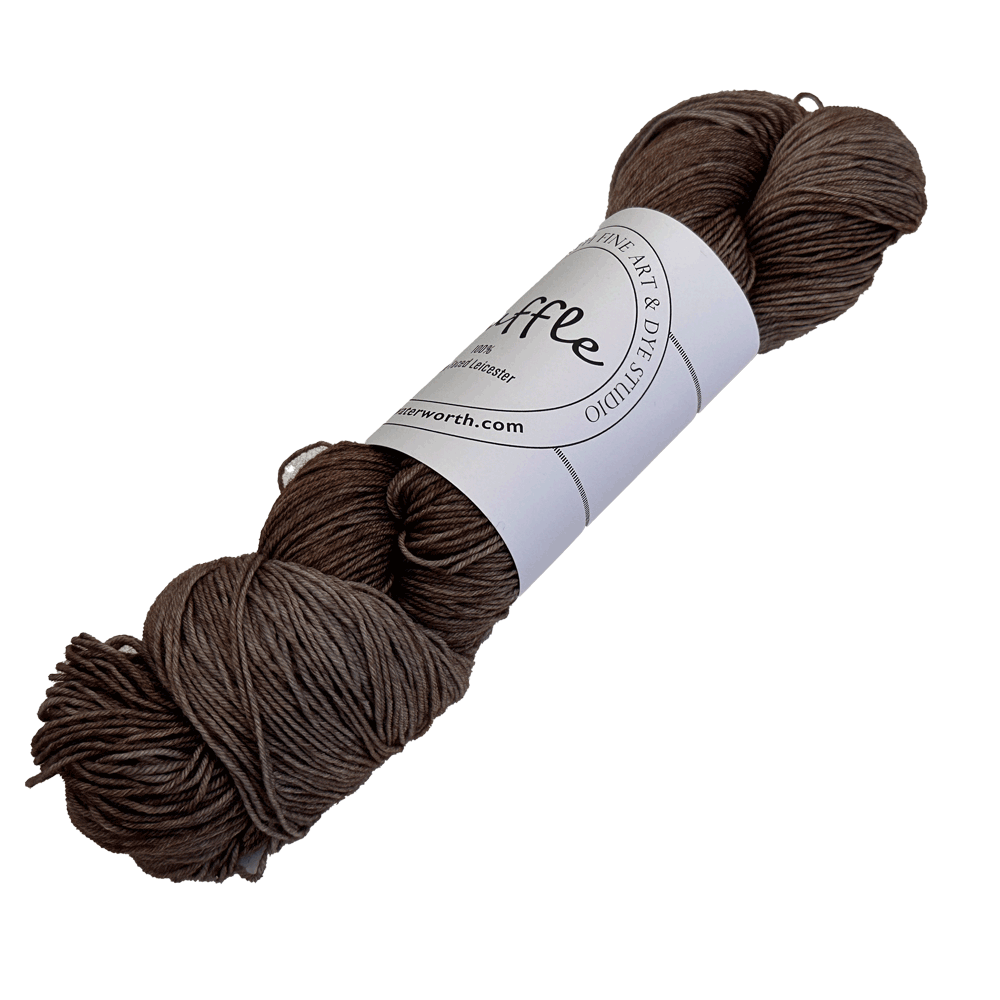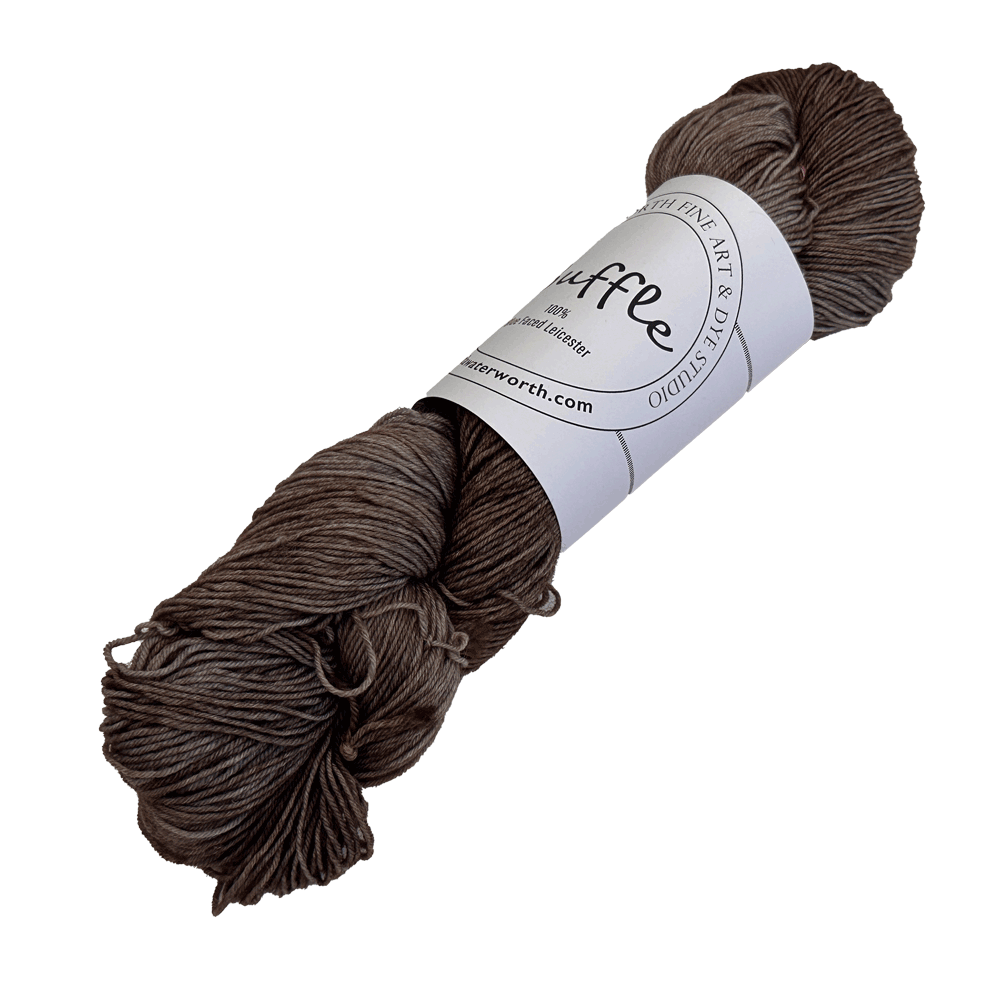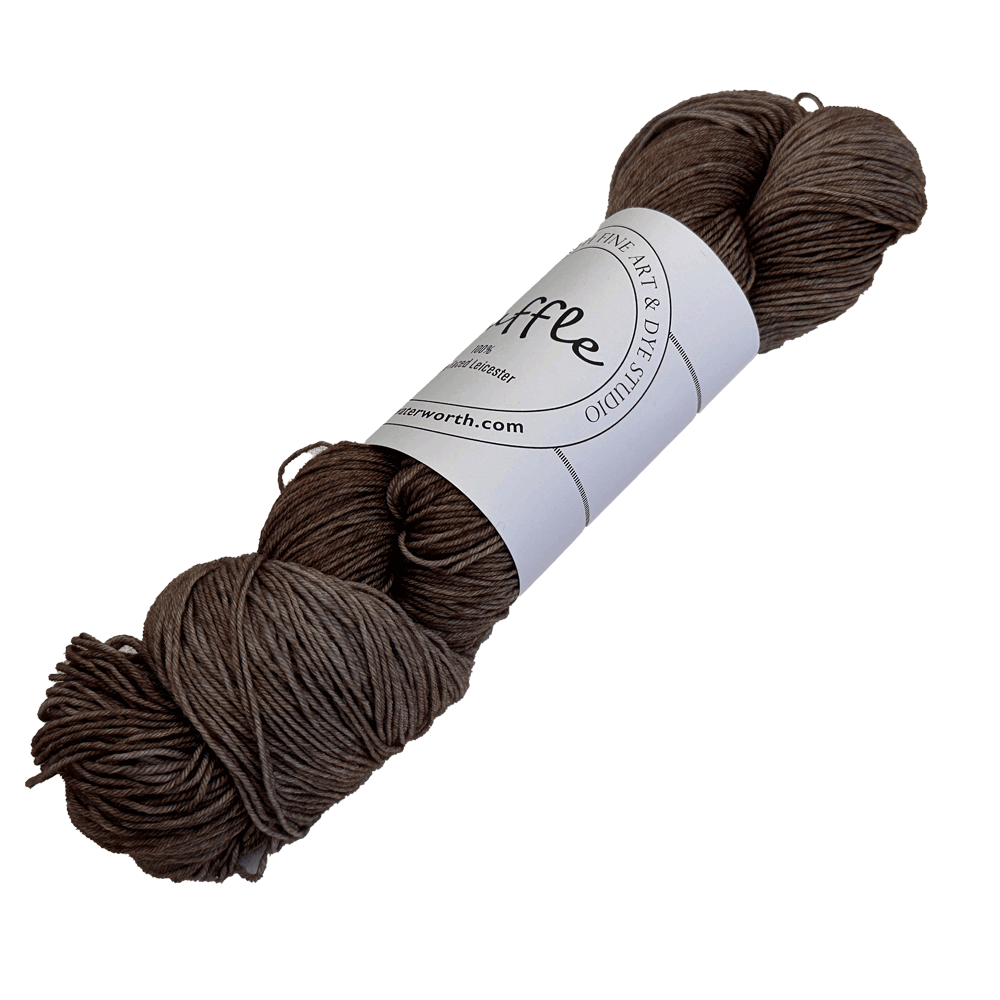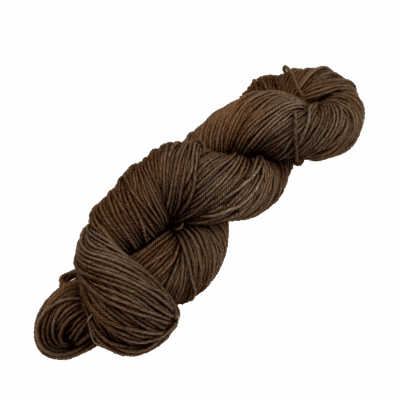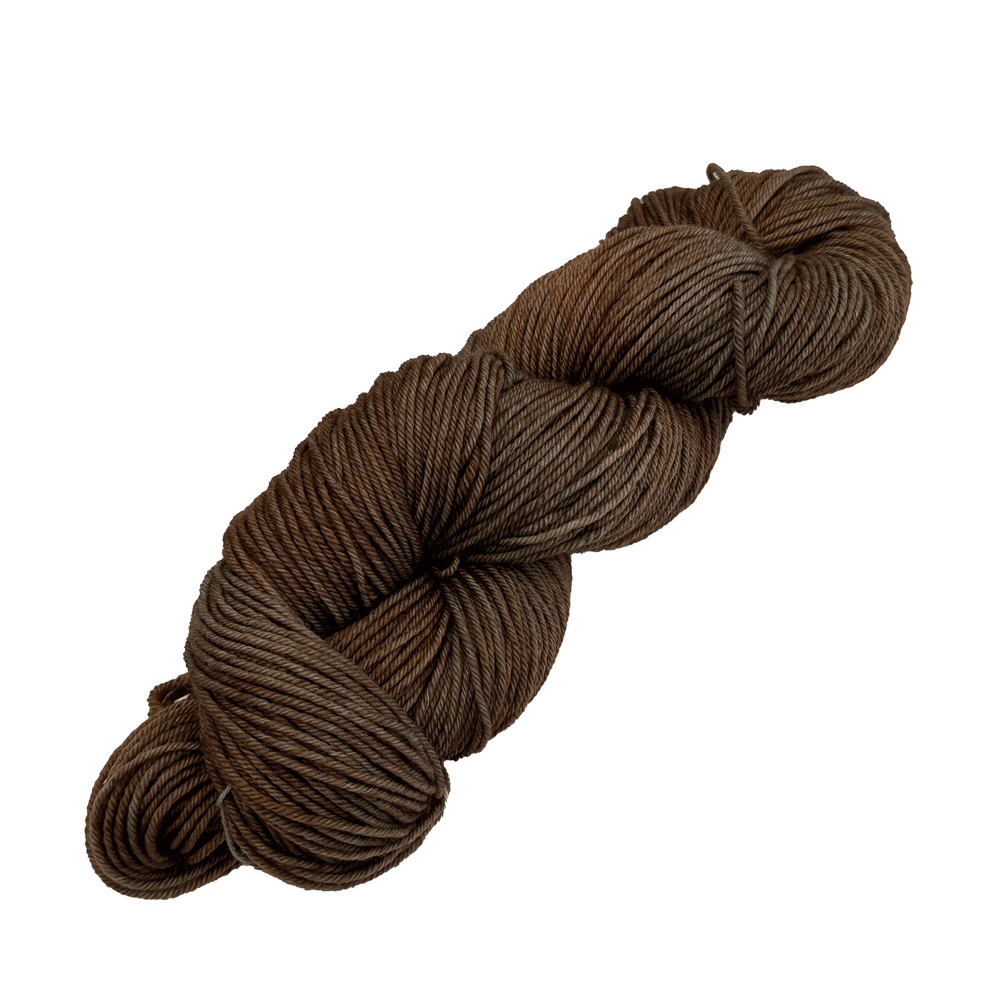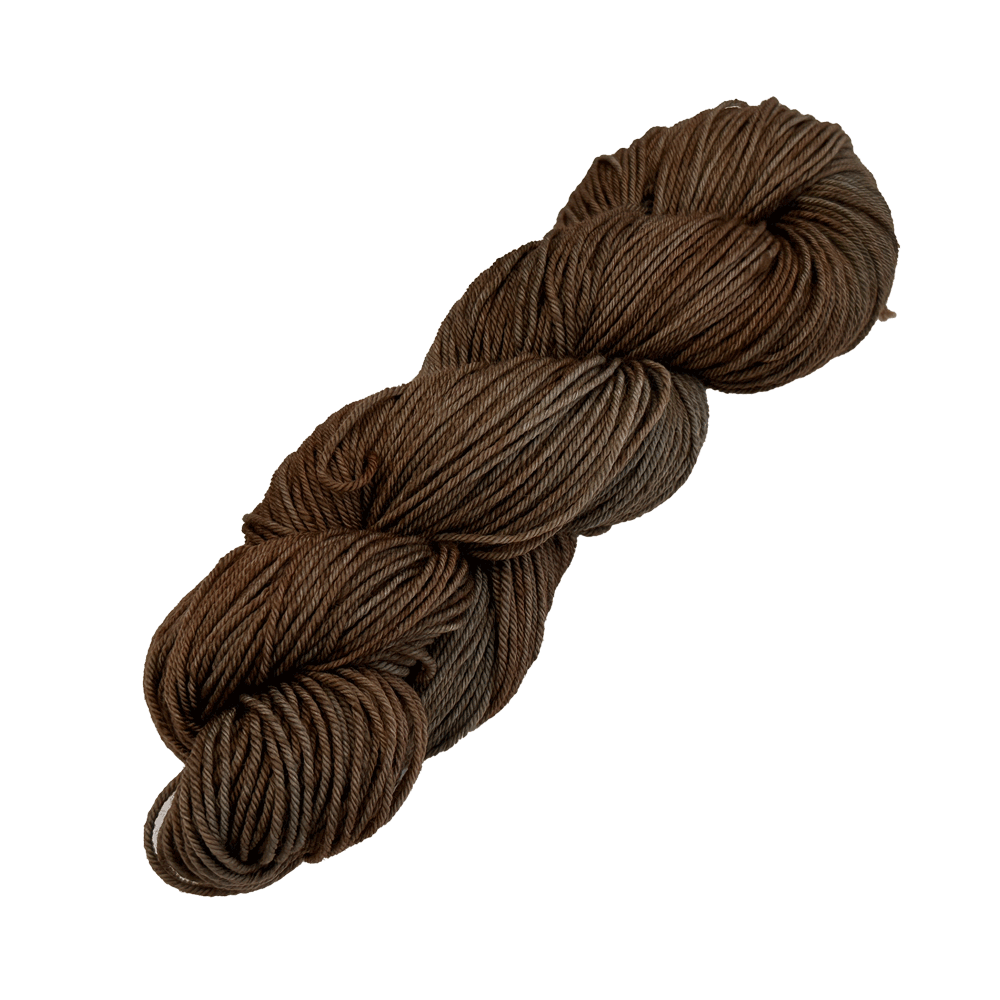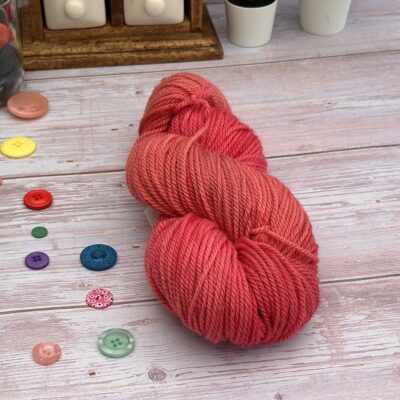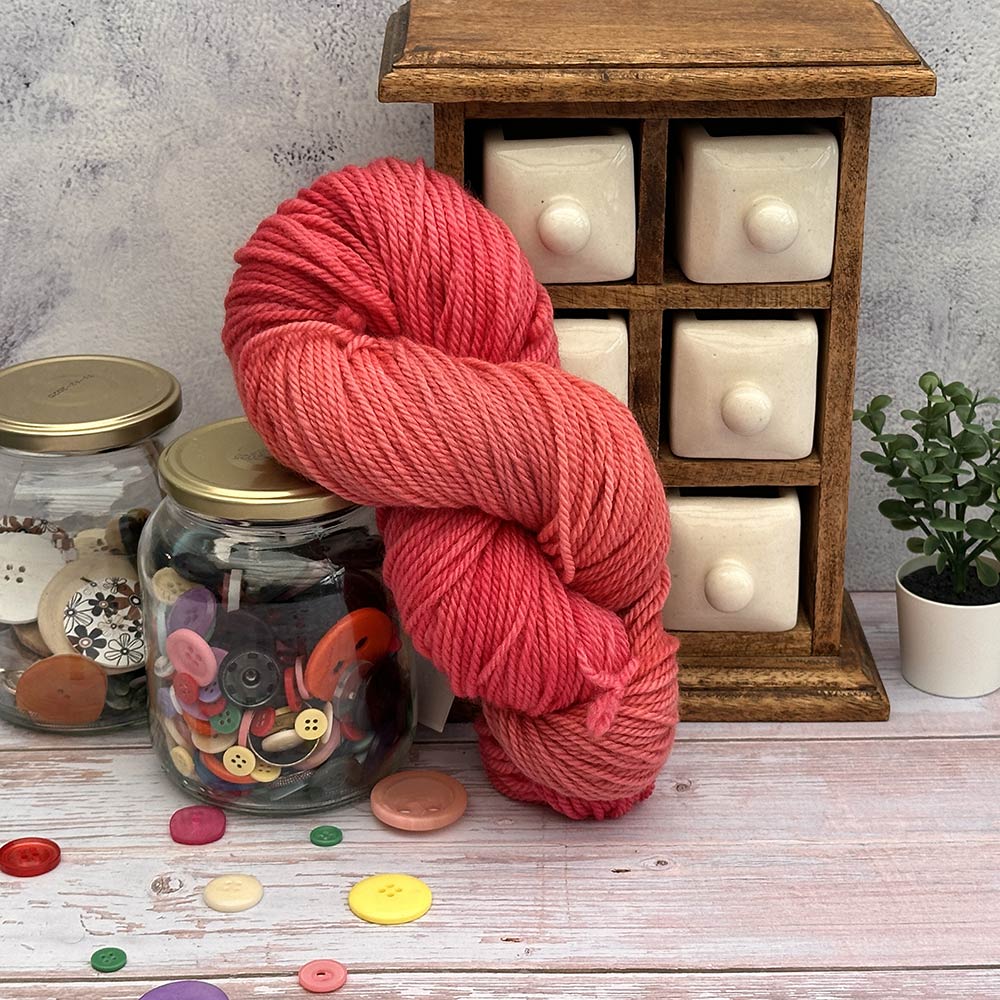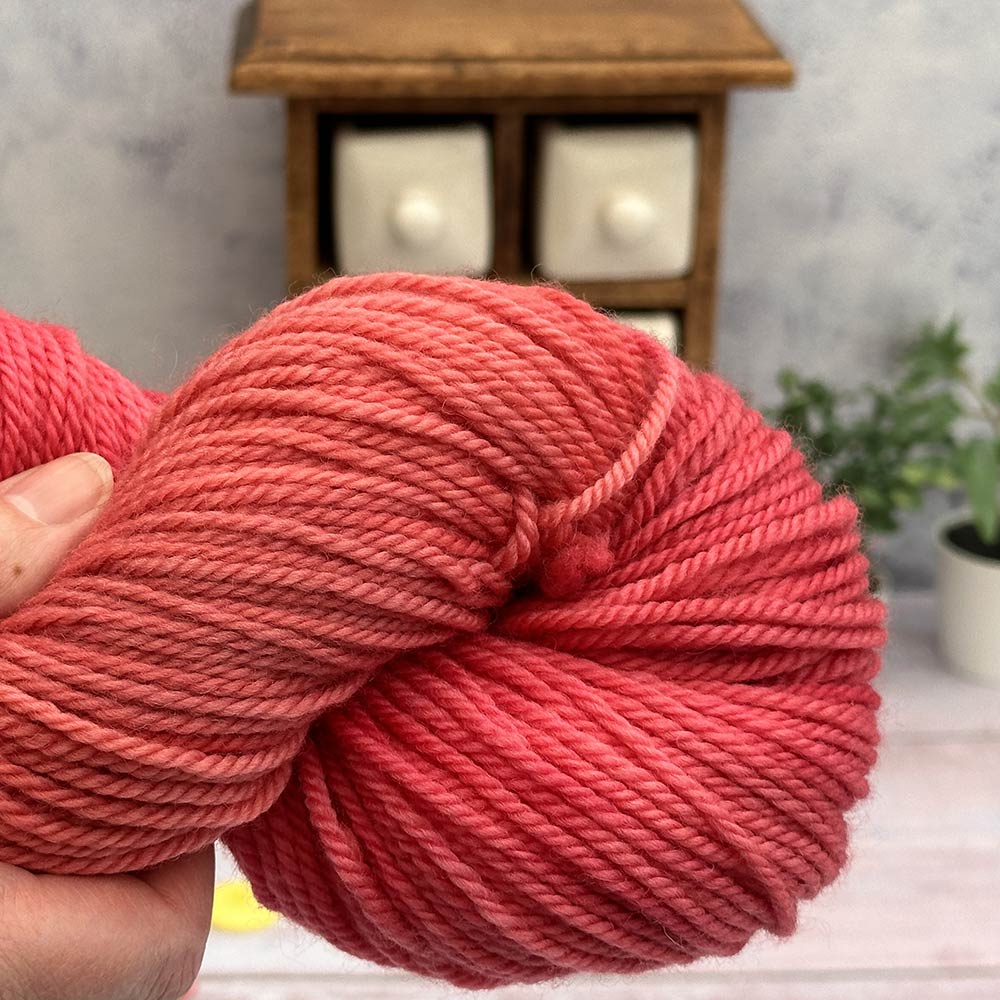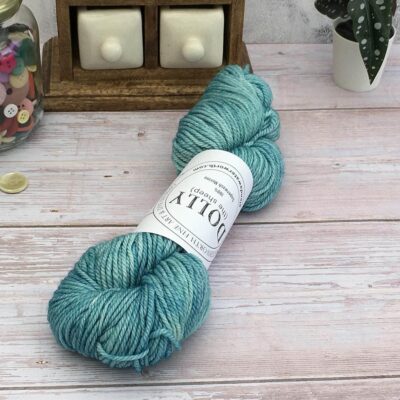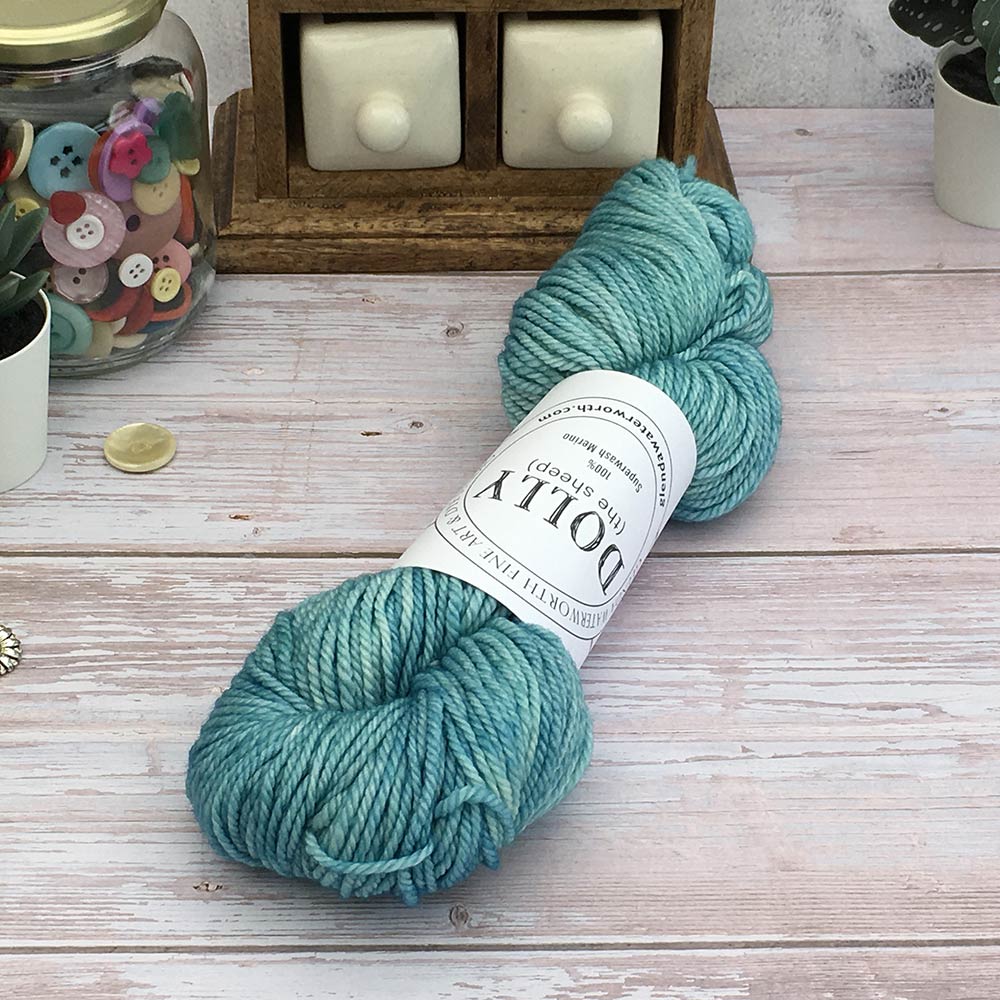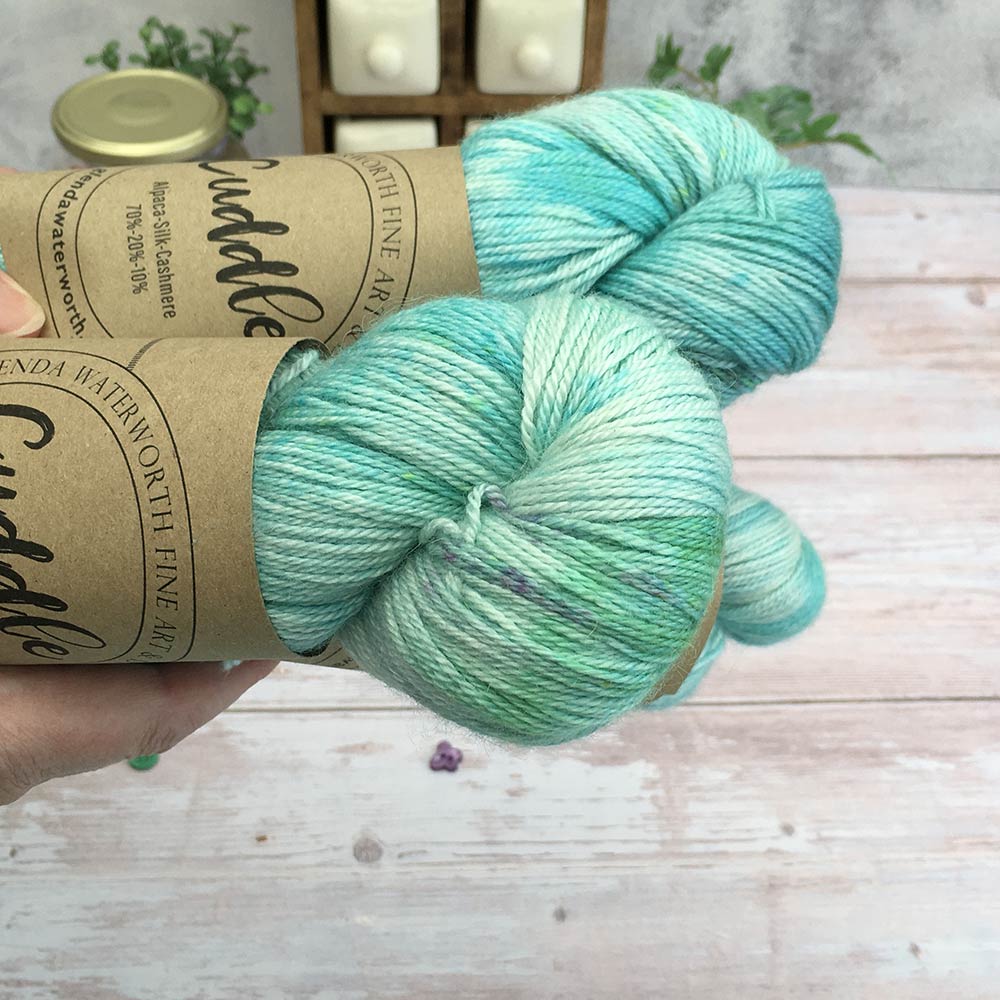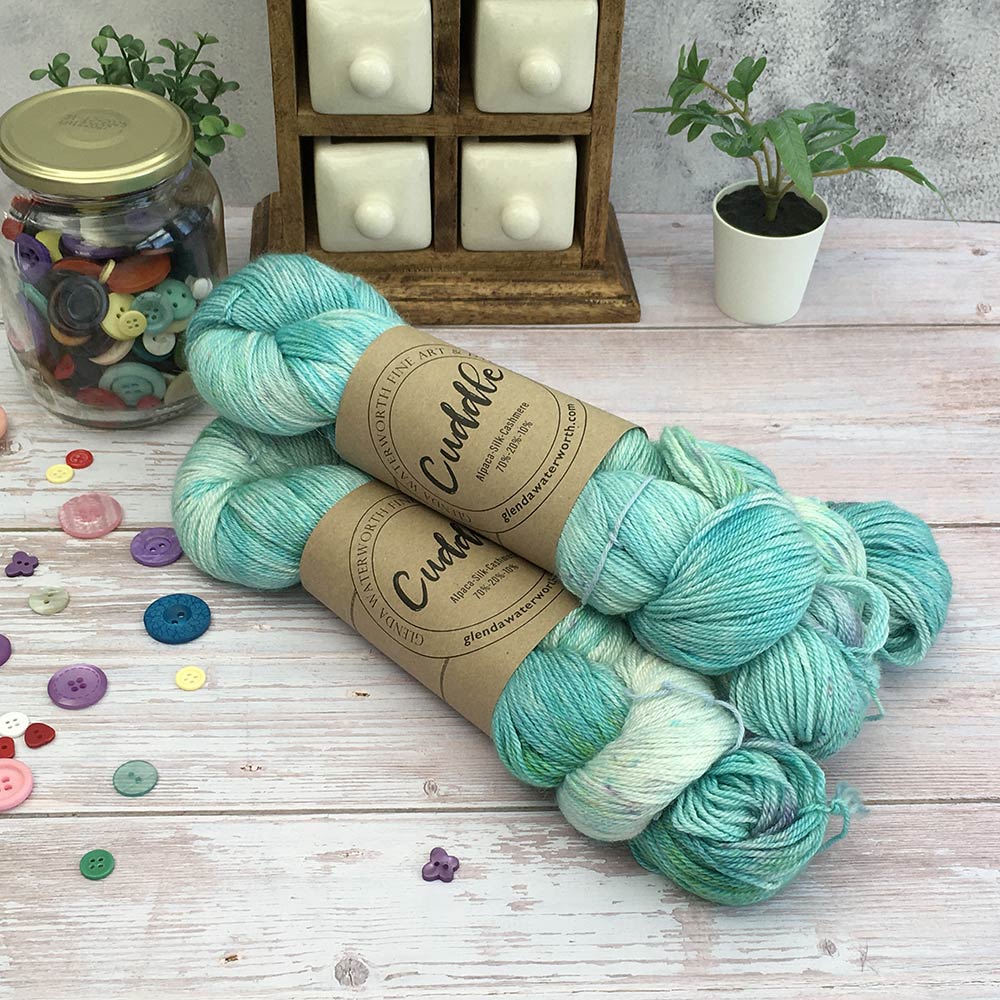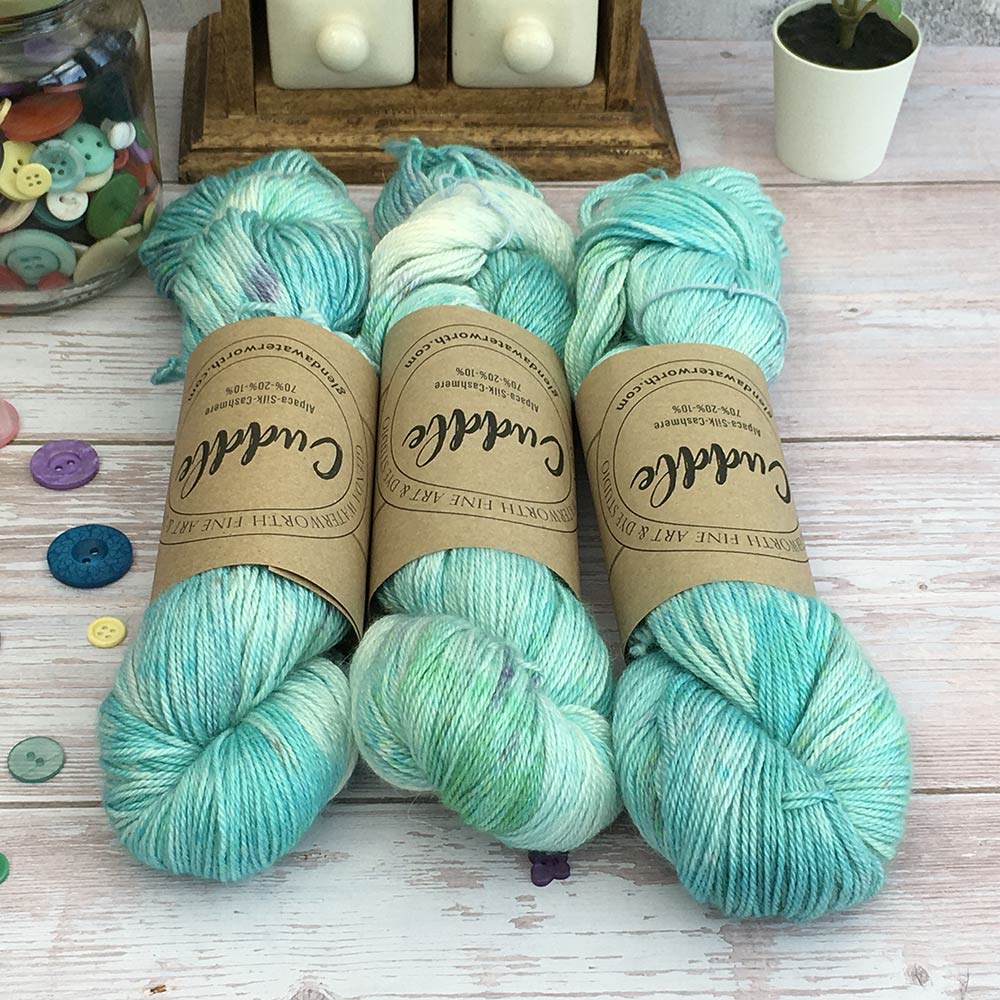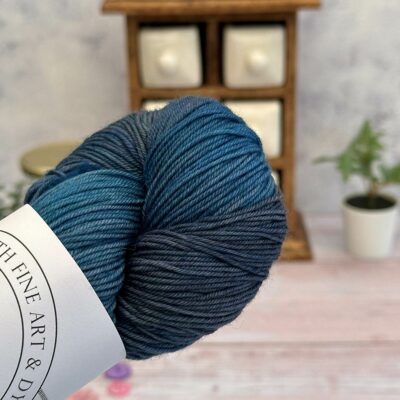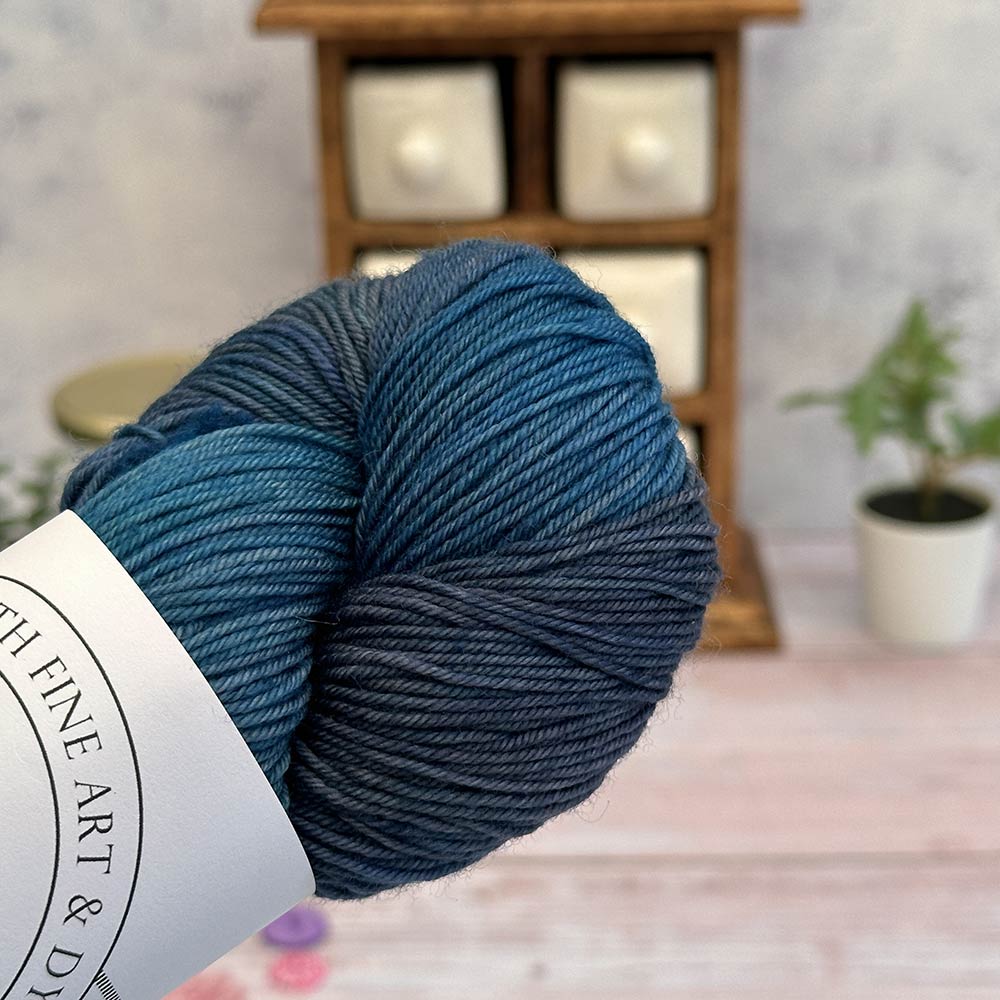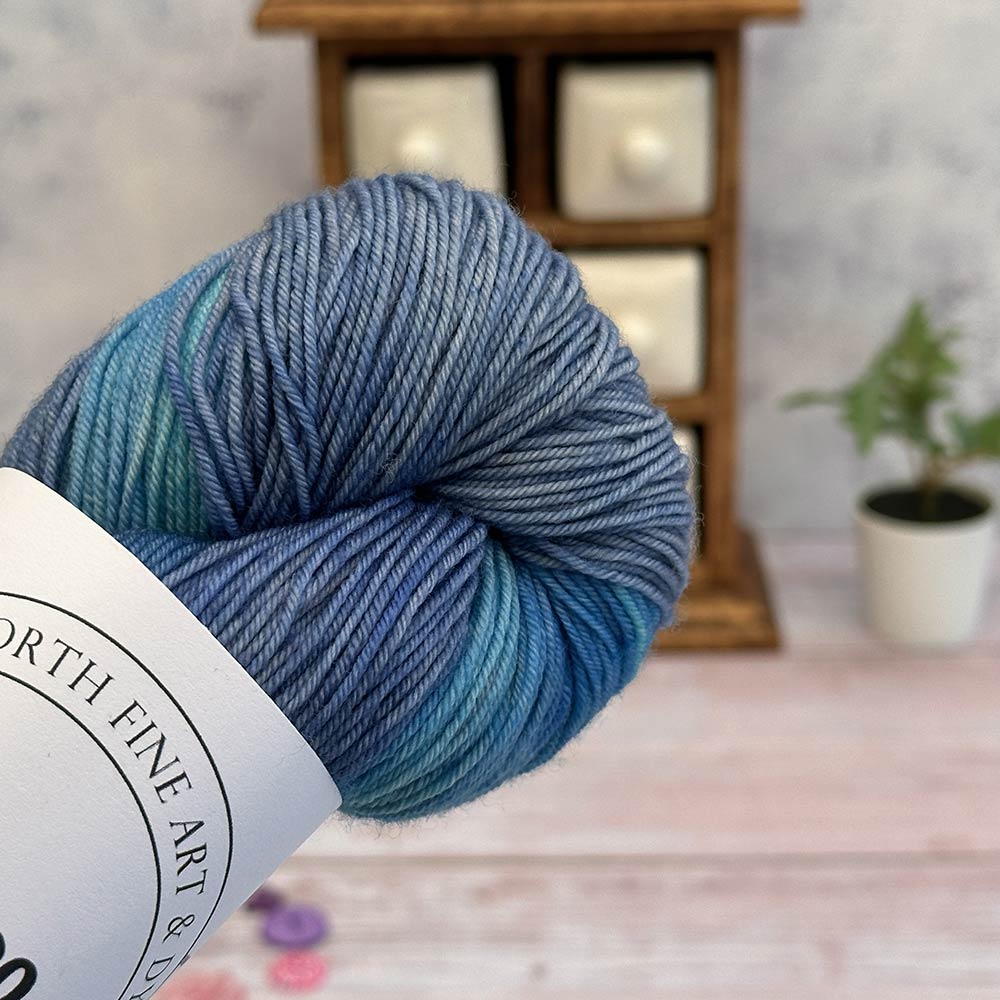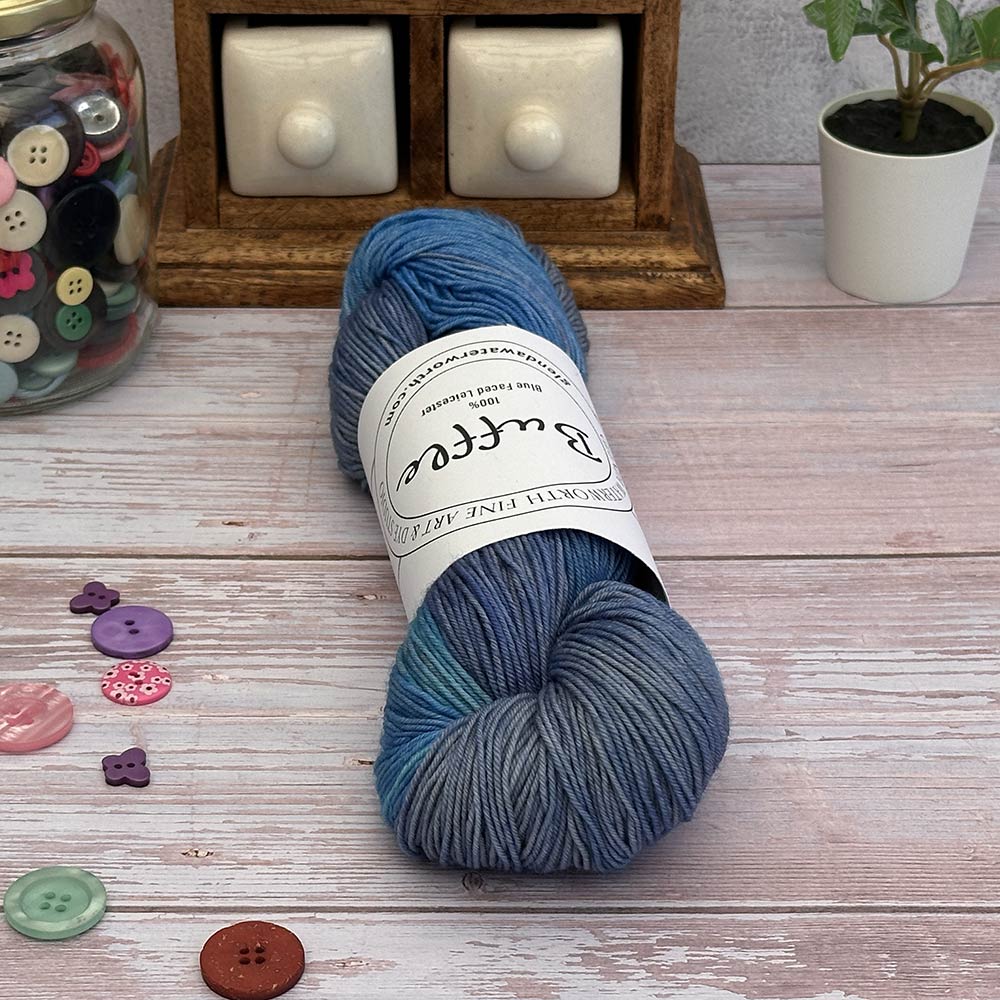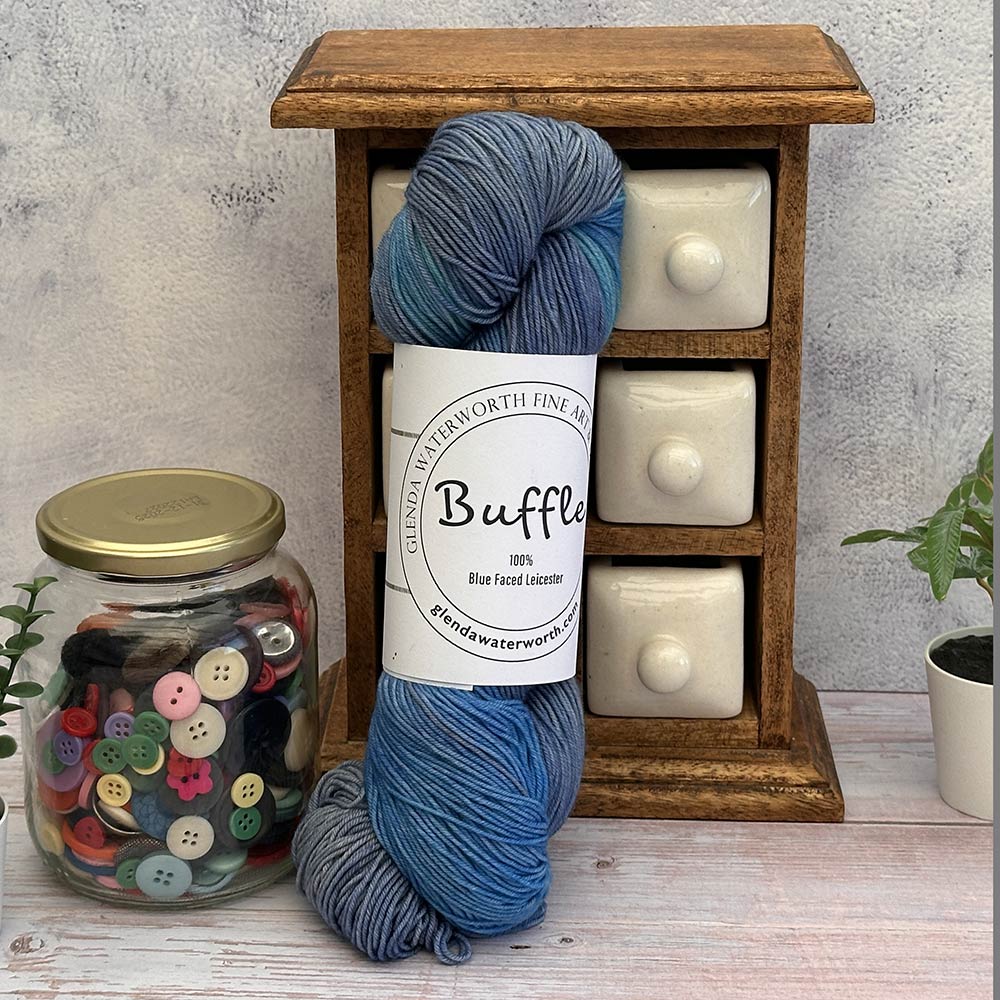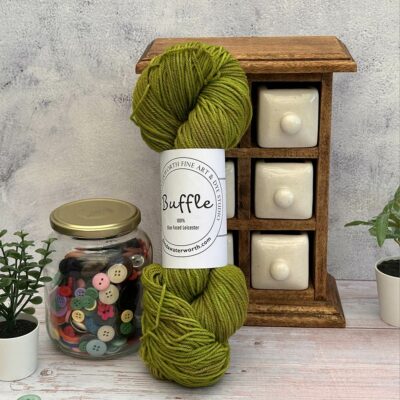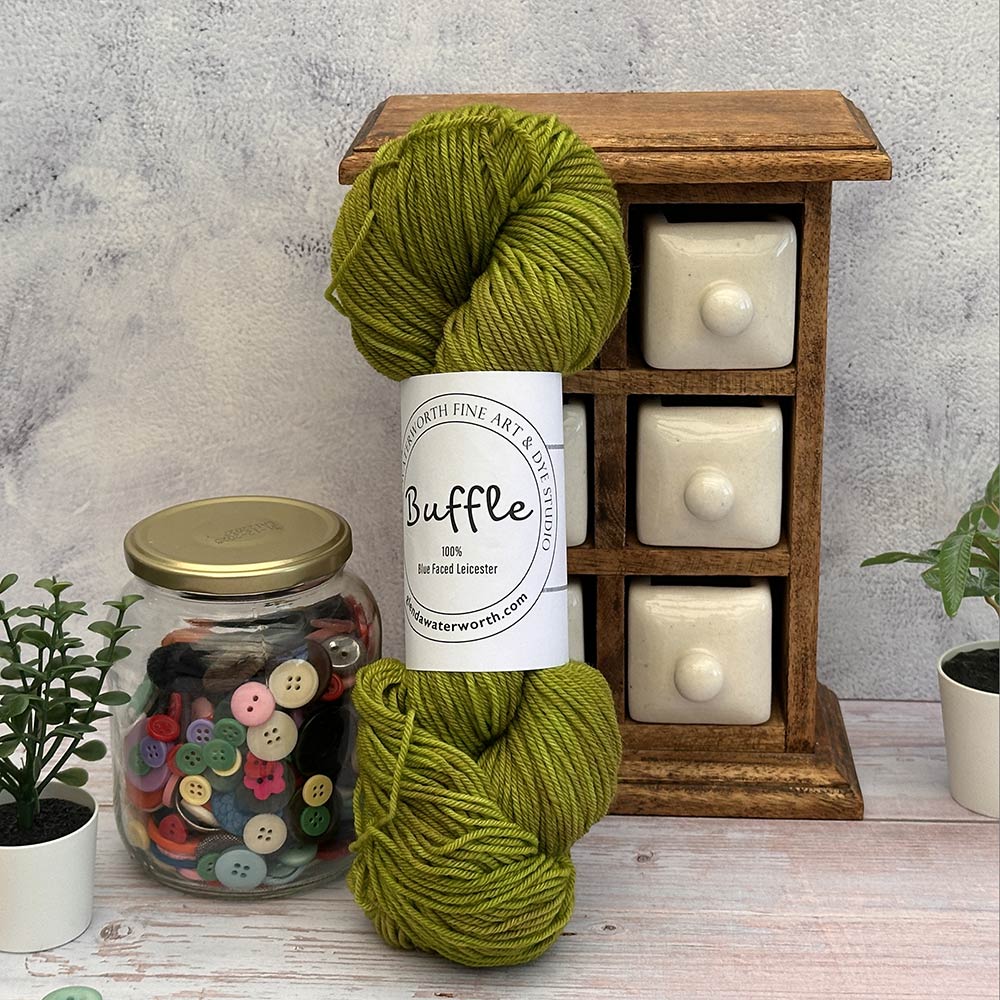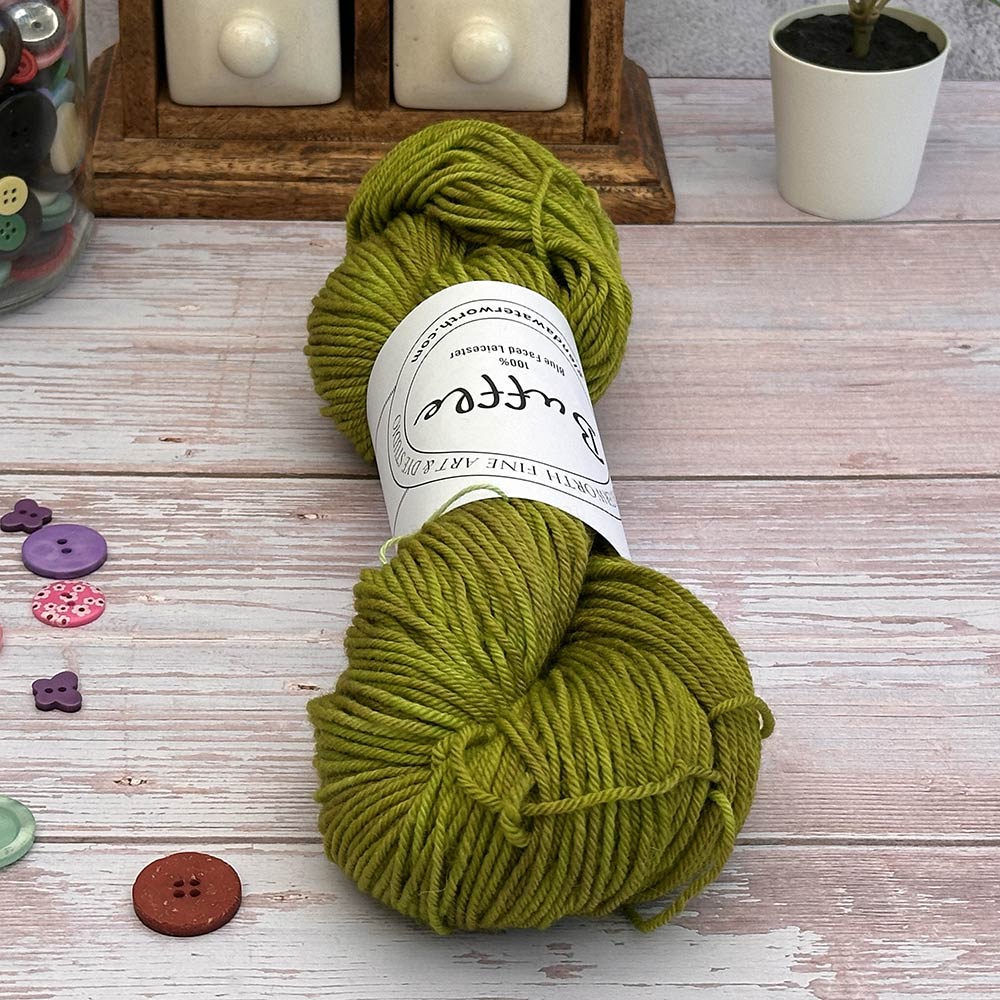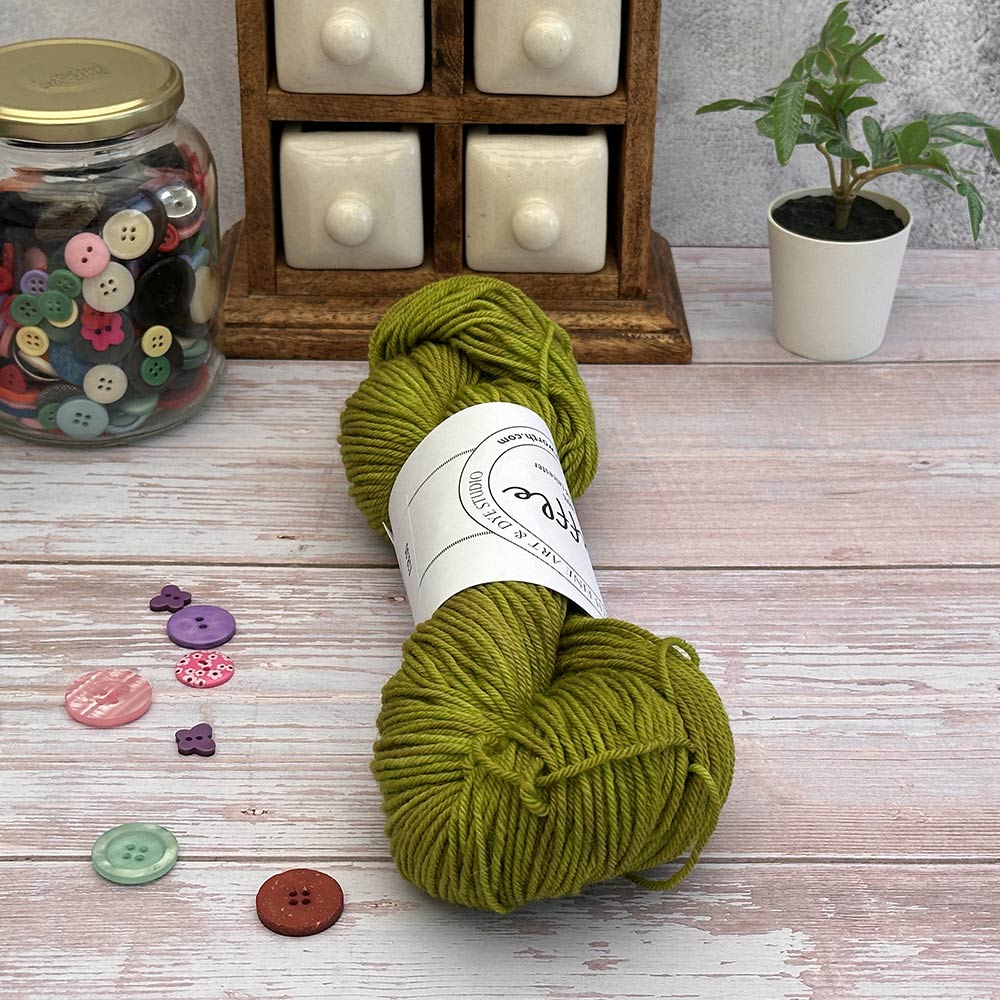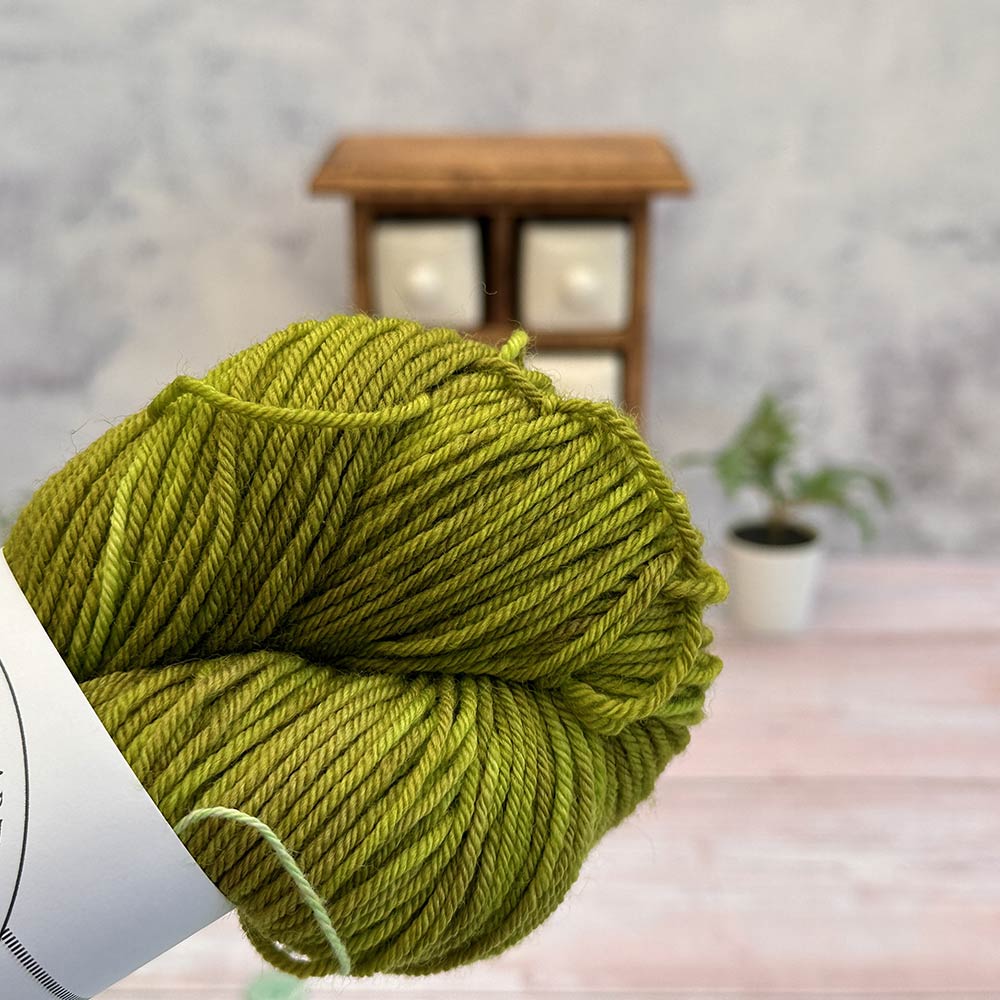Dye Studio
Limited edition hand dyed yarnFilters
Aftercare notes for items made with hand dyed yarn
To get the most from your garments made from hand dyed yarn, please note the following:
Don’t leave lying around in bright sunlight
Although the dyes I use are lightfast, UV light from that giant ball of burning helium in the sky will fade pretty much anything over time.
Don’t wash wool in very hot water
Wool responds best to a warm wash with very little agitation. Superwash wool can handle a fair bit of swishing around, but non-superwash wools (eg, organic) still have all their scales intact and are just looking for an excuse to lock together to make felt. Scales on alpaca are smaller than wool, but given enough hot soapy water and agitation, it too can felt.
Don’t ‘shock’ wool
Switching from hot water to cold is one of the techniques used in felting, so unless you want to deliberately felt a non superwash wool or knitted/crocheted project, always keep that water at a consistent lukewarm temperature.
Superwash wool has been pre-treated to minimise the risk of felting and can be machine washed on a gentle wool cycle. Personally, I always hand wash – if I’ve spent that much time crocheting something, I’m not going to risk it!
Don’t wring it out too hard
I never use the machine for my hand made items and prefer to treat them to a gentle soak in lukewarm soapy water, usually in the bathroom sink. I don’t agitate it as that can abrade the fibres and cause pilling. I let the water drain, then gently roll up the wet item and press it flat against the side of the sink to get the bulk of the water out, so I can hold it while filling the sink again to rinse. I never let running water hit the item either. After a couple of rinses, I’ll press the bulk of the water out, then lay the item on a clean towel, roll up the towel to let it absorb some of the water, then dry the item flat.
Bleeding Dyes
I do all the right things to fix the dyes and create a permanent bond between dye molecules and the fibre I am working with. I wash everything and nothing leaves the studio until the rinse water runs completely clear. However, when you wash an item, there are variables at play that could change things. Water varies in acidity and hardness and certain soaps and washing powders contain enzymes which can affect dyes in different ways. The first time you wash an item, these differences could cause a tiny bit of colour to leach out (particularly if you have the water too hot), but it should be very minor if it happens at all.
If you are planning a project mixing strong colours with pale ones, then I strongly recommend that you make a swatch using all yarns involved and wash it to check everything is colourfast before you begin.

